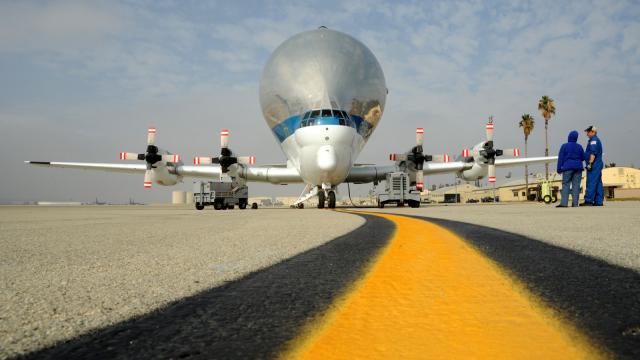They are the grey eminences of aviation. They are doing what they have to do without any ado. We hardly notice them when we take a flight from A to B. However, cargo aircraft can be as interesting and special as fighter planes or passenger aircraft. We are going to prove this.
We compared the following amazing transport aircraft by these means: Name – Country – Primary use – First flight – Powerplant – Empty weight – Payload – Specialty/fun fact.
USS Macon (ZRS-5) — United States — rigid airship, flying aircraft carrier (launched biplane fighters from its exterior riggings) — 1933 — 8 x 420 kW (560 hp) internal combustion engines — 108,000 kg — 72,000 kg — The USS Macon and the USS Akron (ZRS-4) were among the largest flying objects ever built.
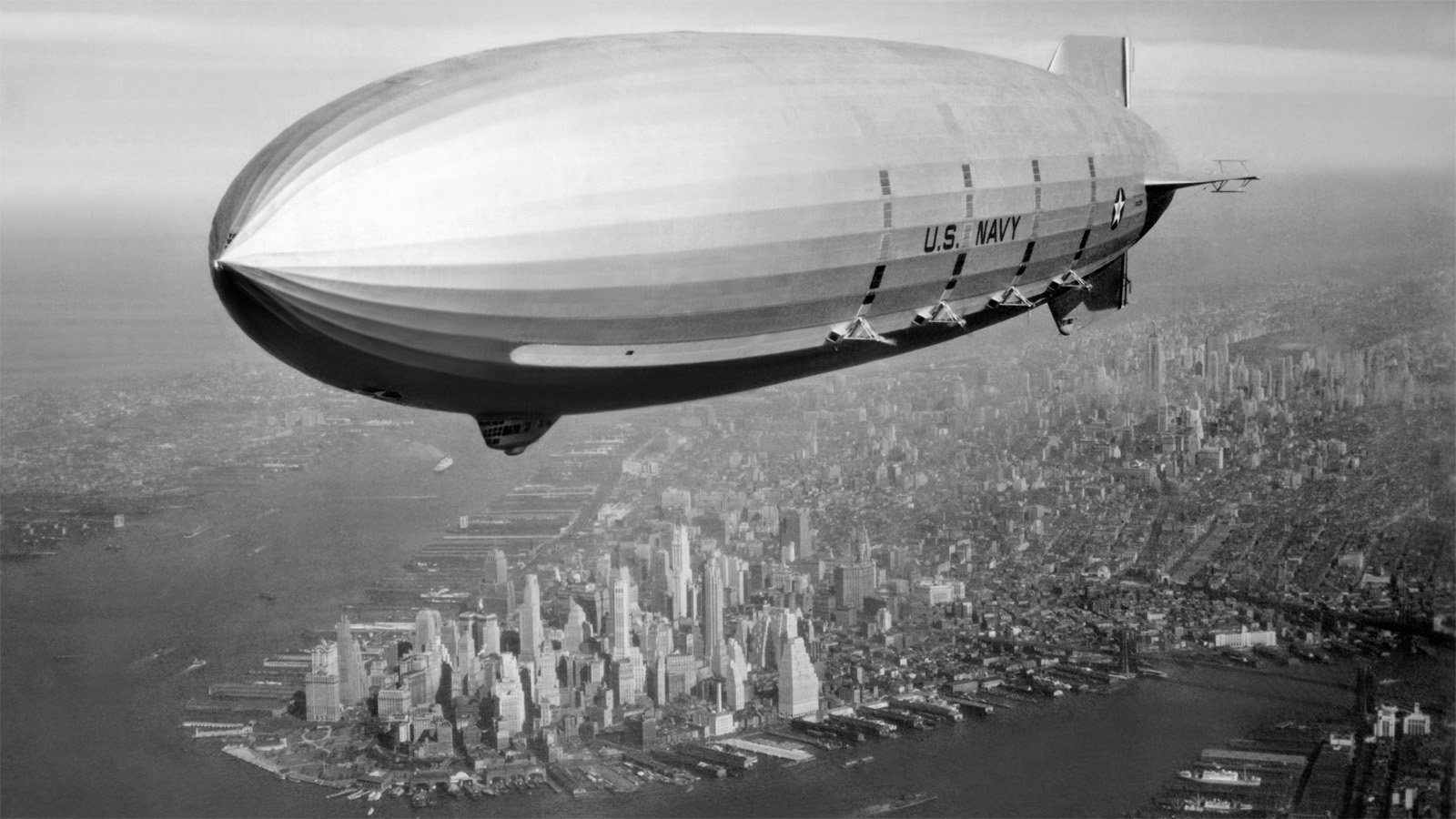
Picture: U.S. Naval Historical Center
Martin JRM Mars — United States — cargo transport seaplane — 1942 — 4 x Wright R-3350-24WA Duplex Cyclone 18-cylinder radial engines — 34,279 kg — 15,000 kg — It was the largest Allied flying boat, although only seven were built.
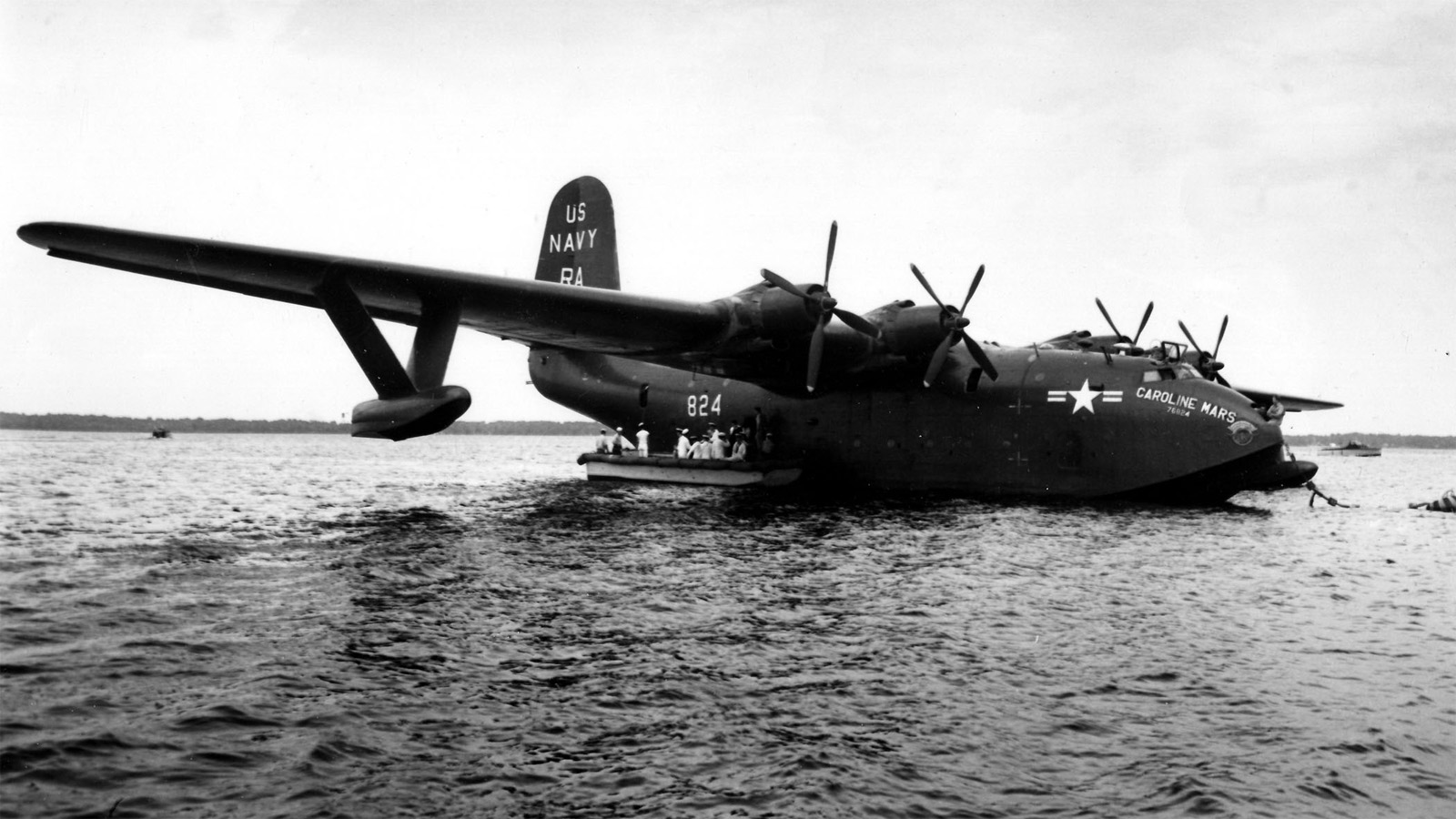
Picture: Naval Air Station Jacksonville/Wikimedia Commons
Messerschmitt Me 323 Gigant — Germany — heavy military transport — 1942 – 6 x Gnome-Rhône 14N-48/49 two-row air-cooled radial engines — 27,330 kg — 12,000 kg. It was the largest land-based transport aircraft of the 2nd world war.
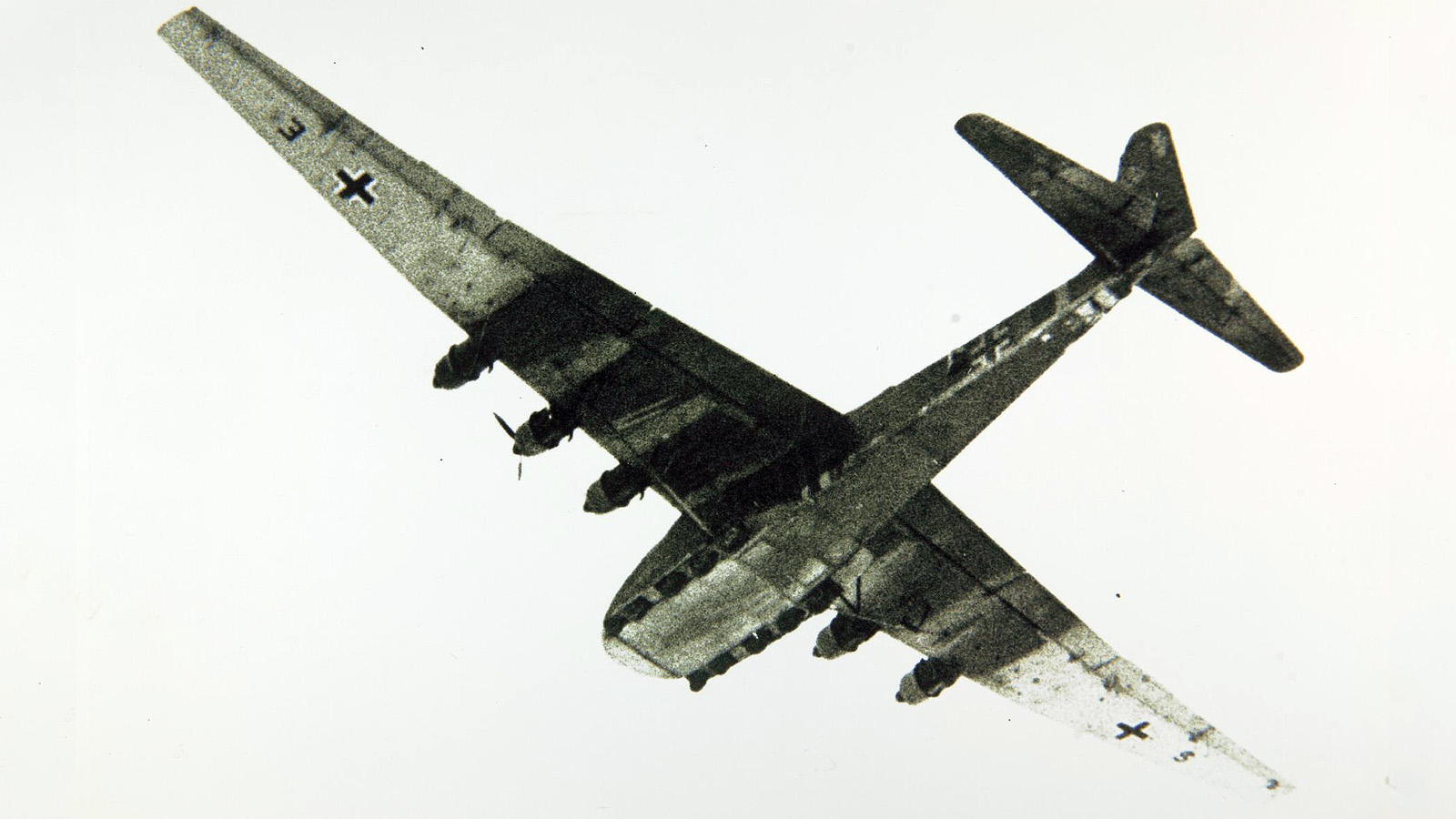
Picture: San Diego Air & Space Museum
The Hughes H-4 Hercules (also known as the “Spruce Goose”) — United States — heavy transport aircraft prototype (1 built) — 1947 — 8 x Pratt & Whitney R-4360 Wasp Major radial engines — loaded weight: 180,000 kg — This is the largest flying boat ever built and it has the largest wingspan of any aircraft in history.
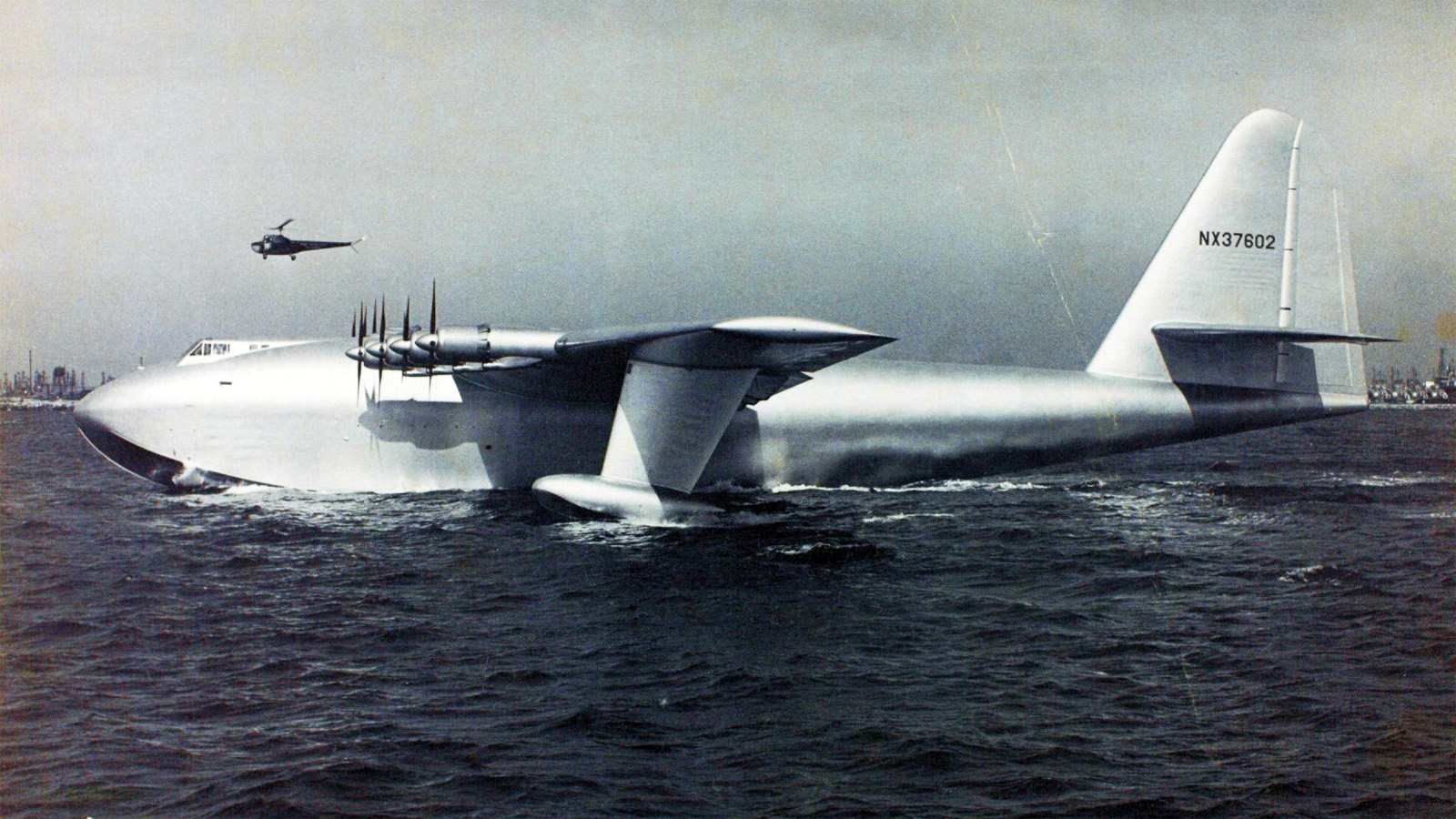
Picture: San Diego Air & Space Museum
Mil Mi-6 — Soviet Union — heavy transport helicopter — 1957 — 2 x Soloviev D-25V turboshaft — 27,240 kg — 12,000 kg — The Mi-6 was the world’s largest and fastest helicopter when it was introduced.
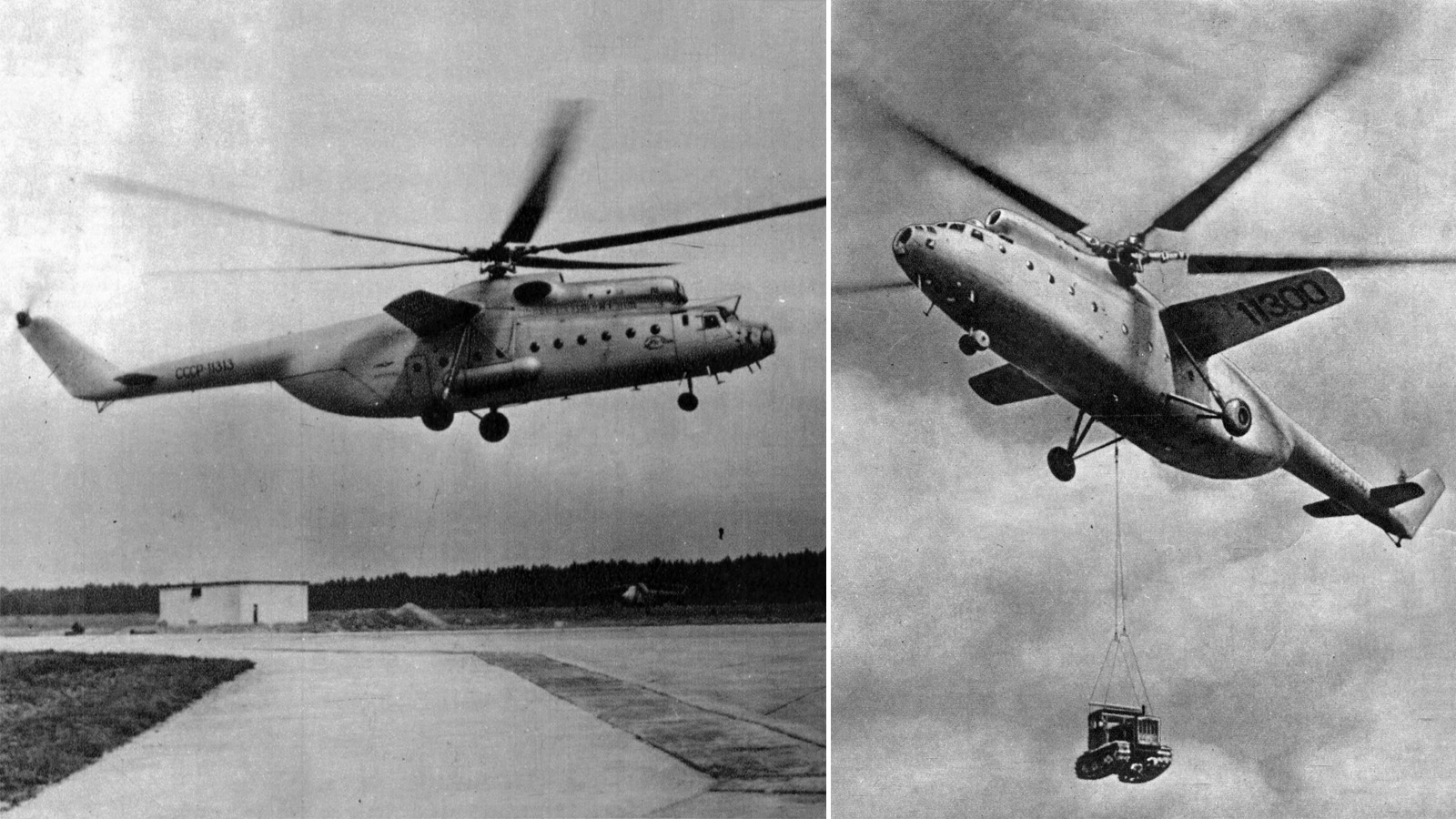
Image sources: Repülés, 1966. július / Utak és járművek, Magyar-Szovjet Baráti Társaság, 1975
Antonov An-12 — Soviet Union — civil and military transport aircraft — 1957 — 4 x Progress AI-20L or AI-20M turboprops — 28,000 kg — 20,000 kg — Over 900 had been built, in both military and civilian versions.

Picture: Björn Strey
Canadair CL-44 — Canada — turboprop airliner and cargo aircraft — 1959 — 4 x Rolls-Royce Tyne 515/50 turboprops — 40,348 kg — 29,959 kg — Innovative fuselage design.
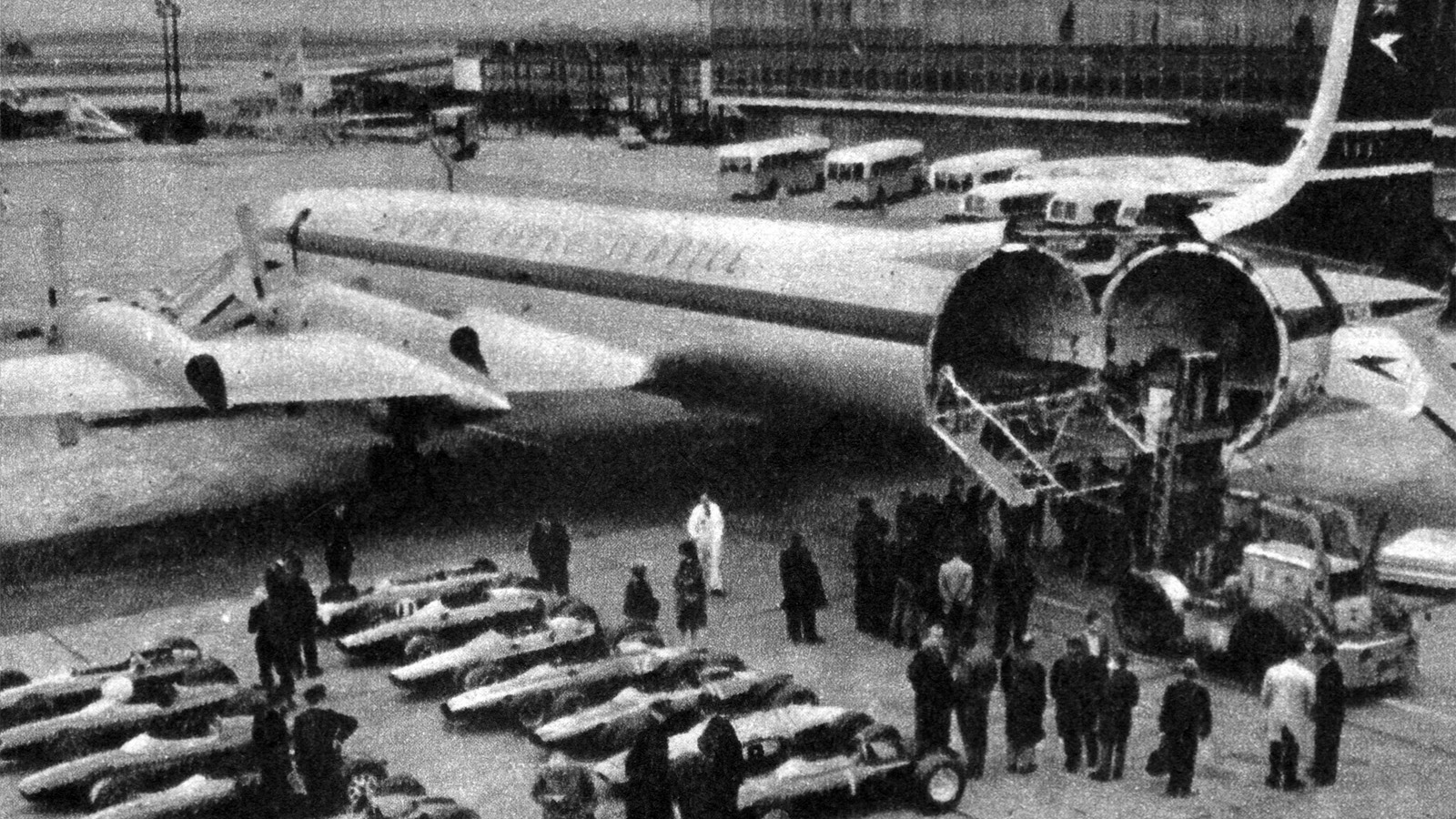
Image source: Repülés, 1964. február
Armstrong Whitworth AW.660 Argosy — Great-Britain — military transport/cargo aircraft — 1959 — 4 x Rolls-Royce Dart RDa.8 Mk 101 turboprops — 25,401 kg — 13,150 kg — Its unusual “pod and boom” structure earned its nickname “The Whistling Wheelbarrow.”
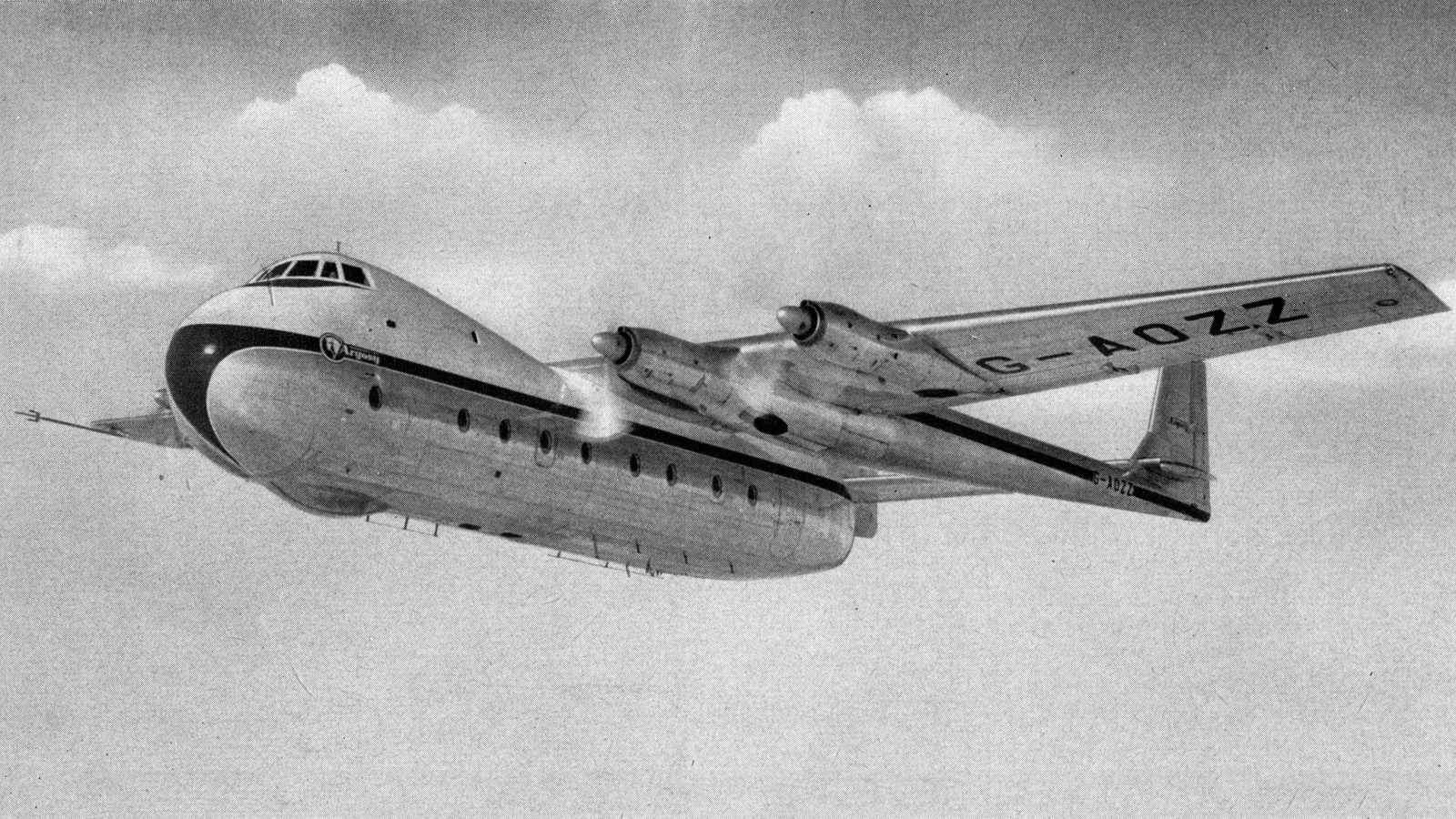
Image source: Flieger-Jahrbuch, 1965. Transpress Veb Verlag Für Verkehrswesen Berlin, 1964.
Mil Mi-10 — Soviet Union — heavy military transport aircraft — 1960 — 2 x Soloviev D-25V turboshaft — 27,100 kg — 3,000 kg internally or up to 15,000 kg payload on platform or 8,000 kg max slung payload — A transport helicopter of flying crane configuration.
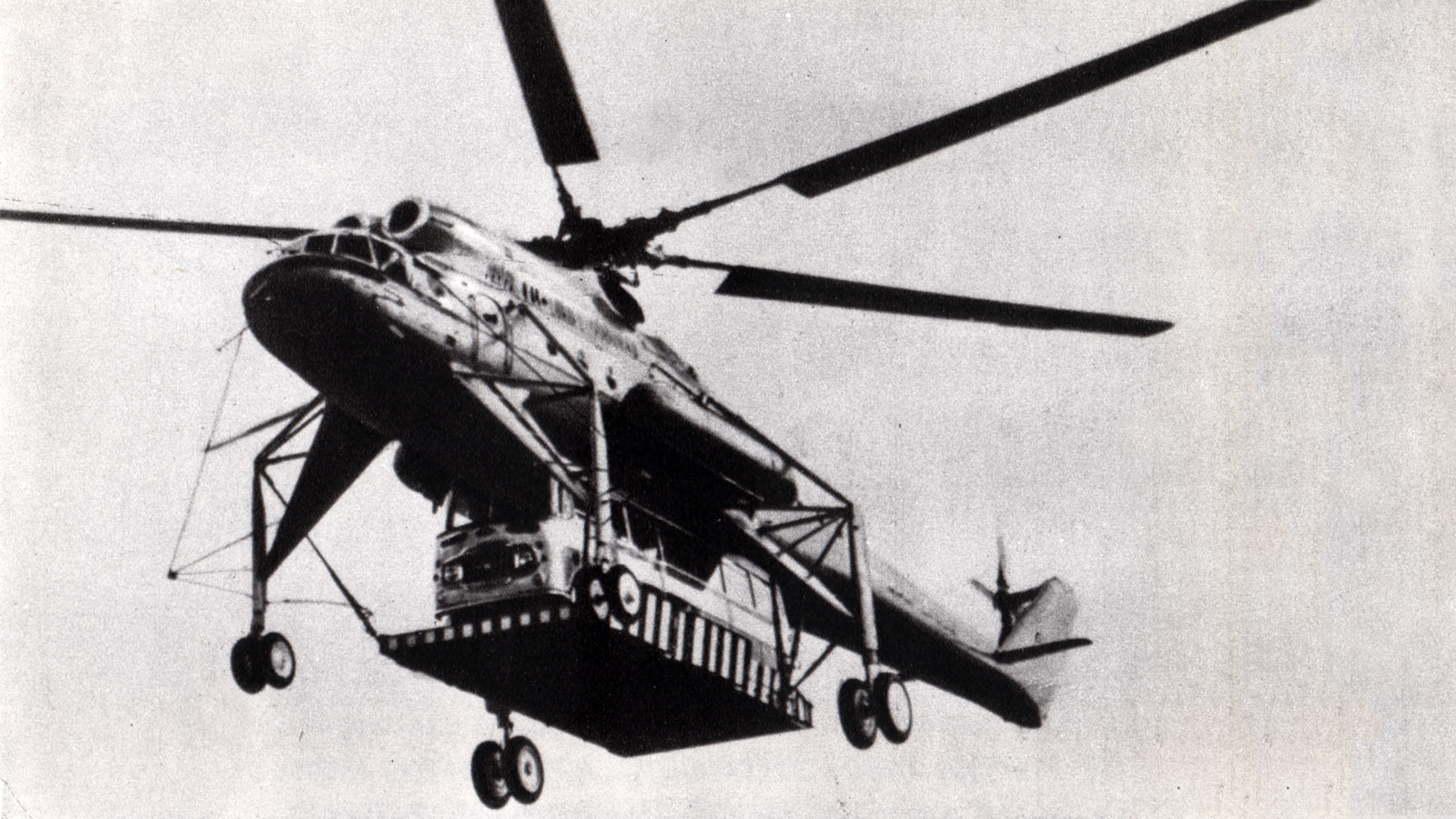
Image source: Utak és járművek, Magyar-Szovjet Baráti Társaság, 1975
Aero Spacelines B-377PG Pregnant Guppy — United States — wide-bodied cargo aircraft — 1962 — 4 x Pratt & Whitney R-4360-59 “Wasp Major” radials — 41,275 kg — 22,670 kg — This aircraft was built to transport outsized cargo for NASA’s Apollo program, primarily portions of the Saturn 5 rockets.
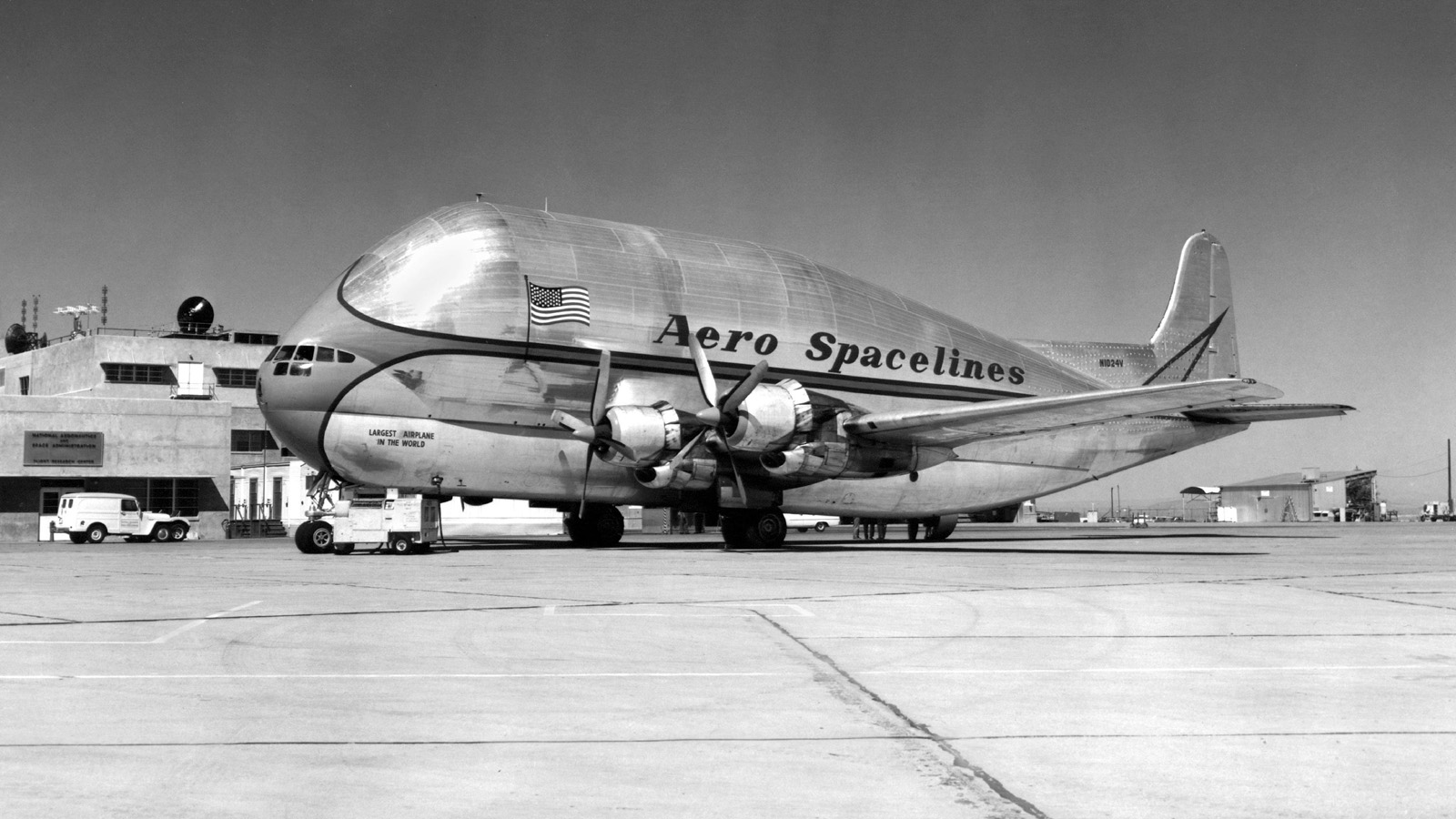
Picture: NASA
Sikorsky CH-54 Tarhe — United States — heavy-lift cargo helicopter — 1962 — 2 x Pratt & Whitney T73-P-700 turboshaft engines — 8,980 kg — 9,072 kg — A highly successful aerial crane used in Vietnam for transport and downed-aircraft retrieval.
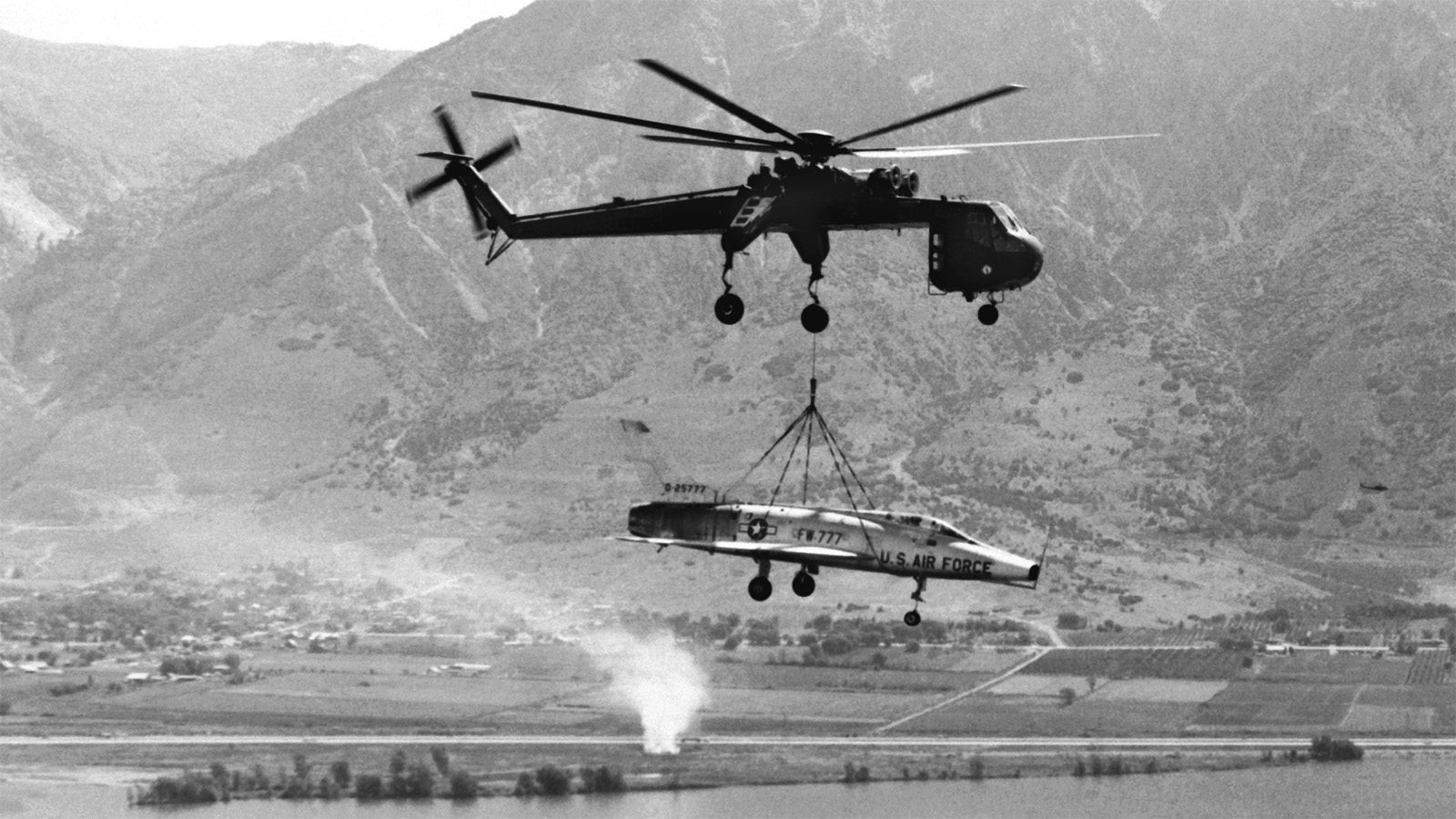
Picture: U.S. Defence Imagery/Wikimedia Commons
Antonov An-22 — Soviet Union — heavy military transport aircraft — 1965 — 4 x Kuznetsov NK-12MA turboprops driving contra-rotating propellers — 114,000 kg — 80,000 kg — The world’s largest turboprop-powered aeroplane.
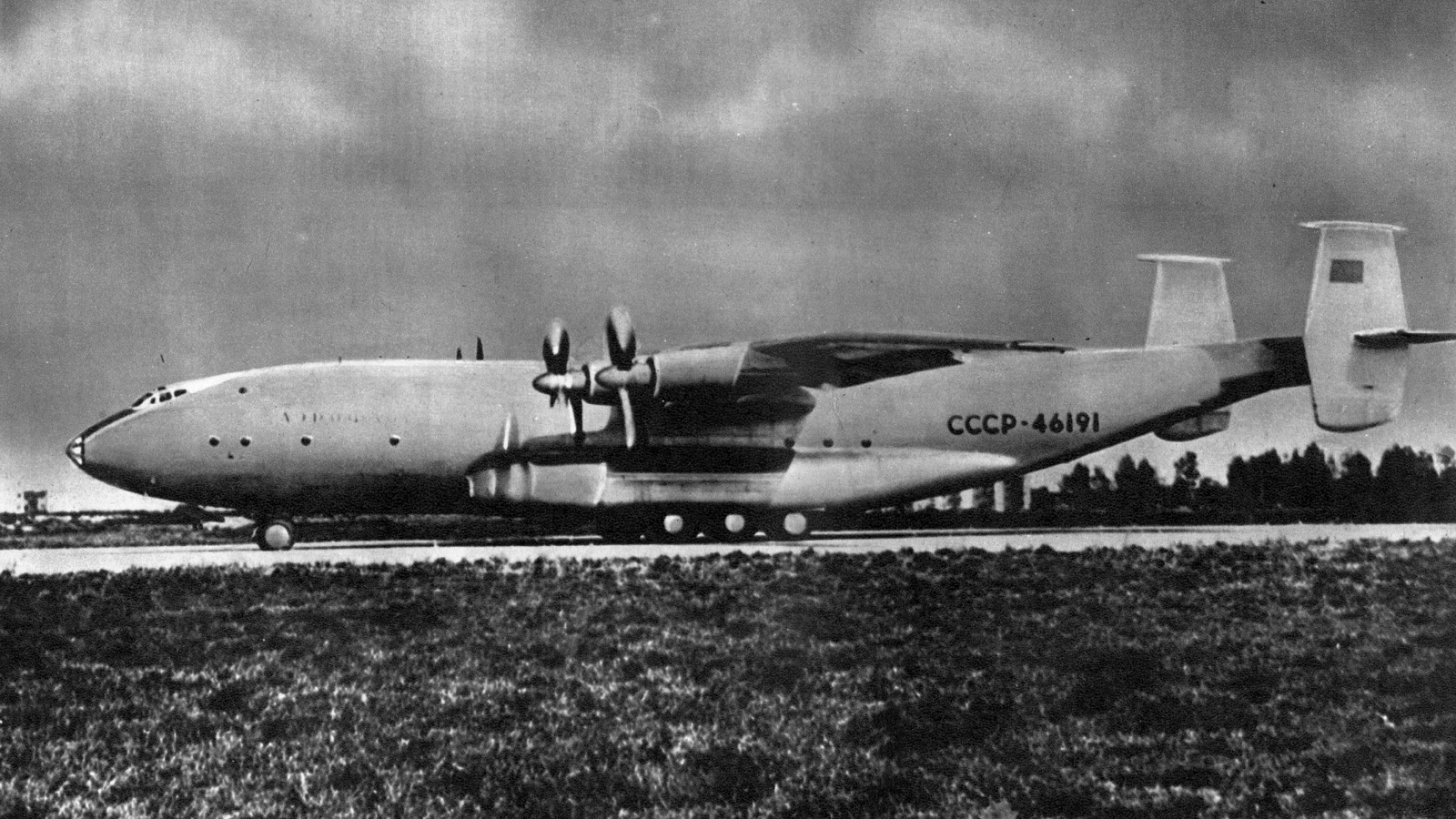
Bonus pic — nice view with a bus:
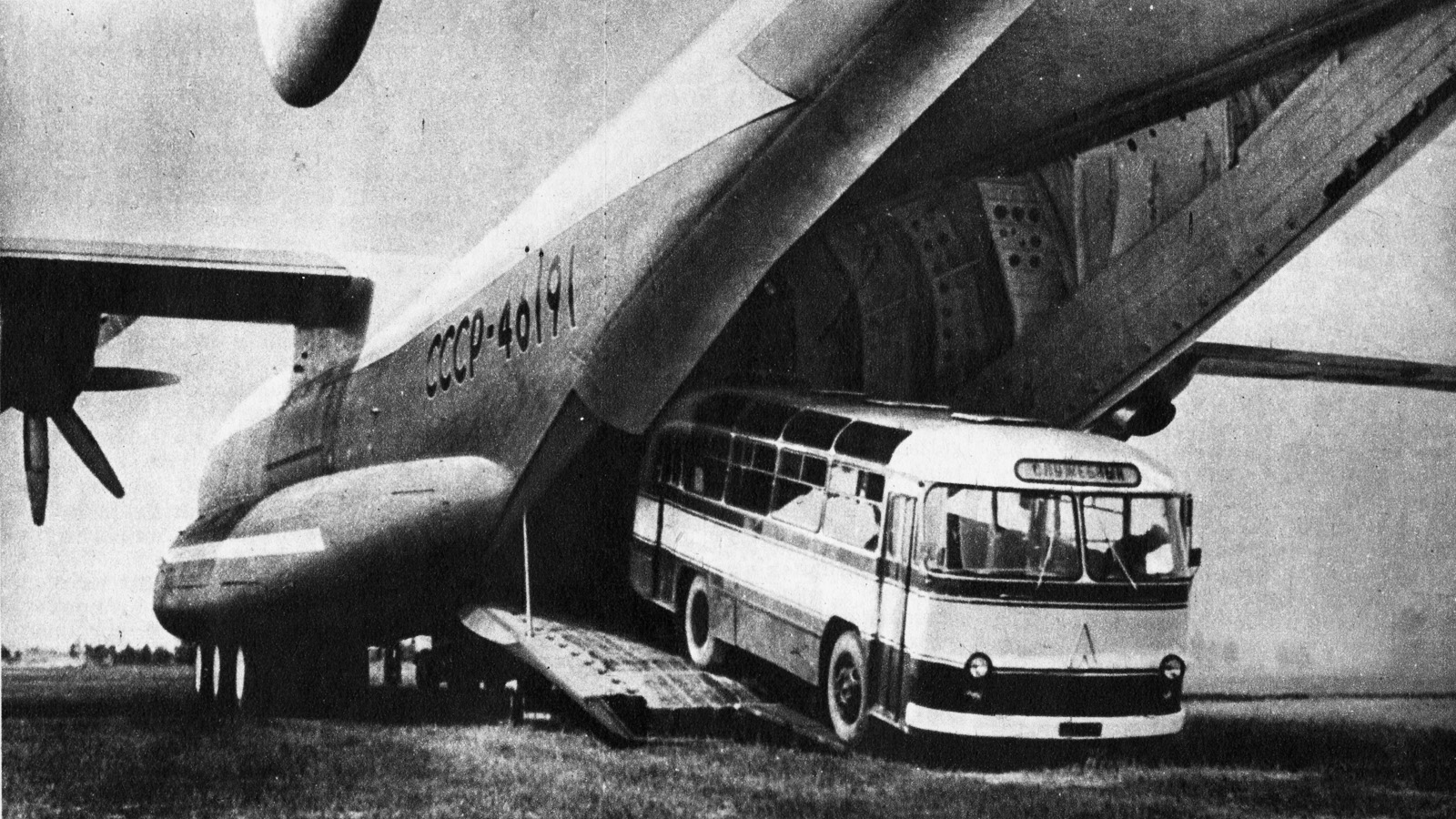
Image source: Repülés, 1965. augusztus
Mil V-12 — Soviet Union — heavy lift helicopter — 1968 — 4 x Soloviev D-25VF turboshaft engines — 69,100 kg — 40,000 kg — The largest helicopter ever flown, although only two prototypes were built of this transverse rotor system aircraft.
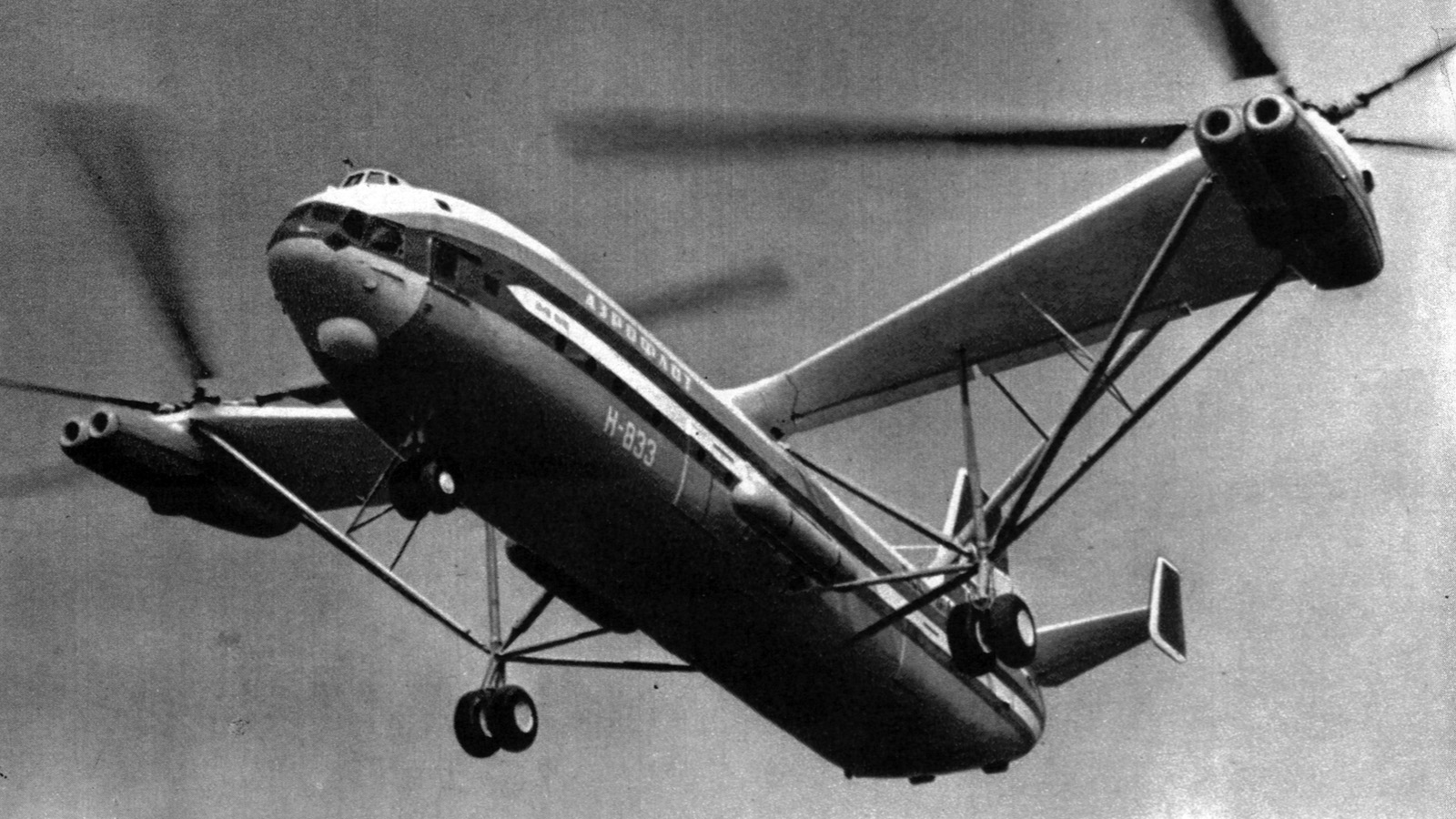
Image source: Utak és járművek, Magyar-Szovjet Baráti Társaság, 1975
Lockheed C-5 Galaxy — United States — USAF strategic airlifter — 1968 — 4 x General Electric TF39-GE-1C high-bypass turbofan — 172,370 kg — 122,470 kg — One of the largest military aircraft in the world used to move vehicles and equipment.
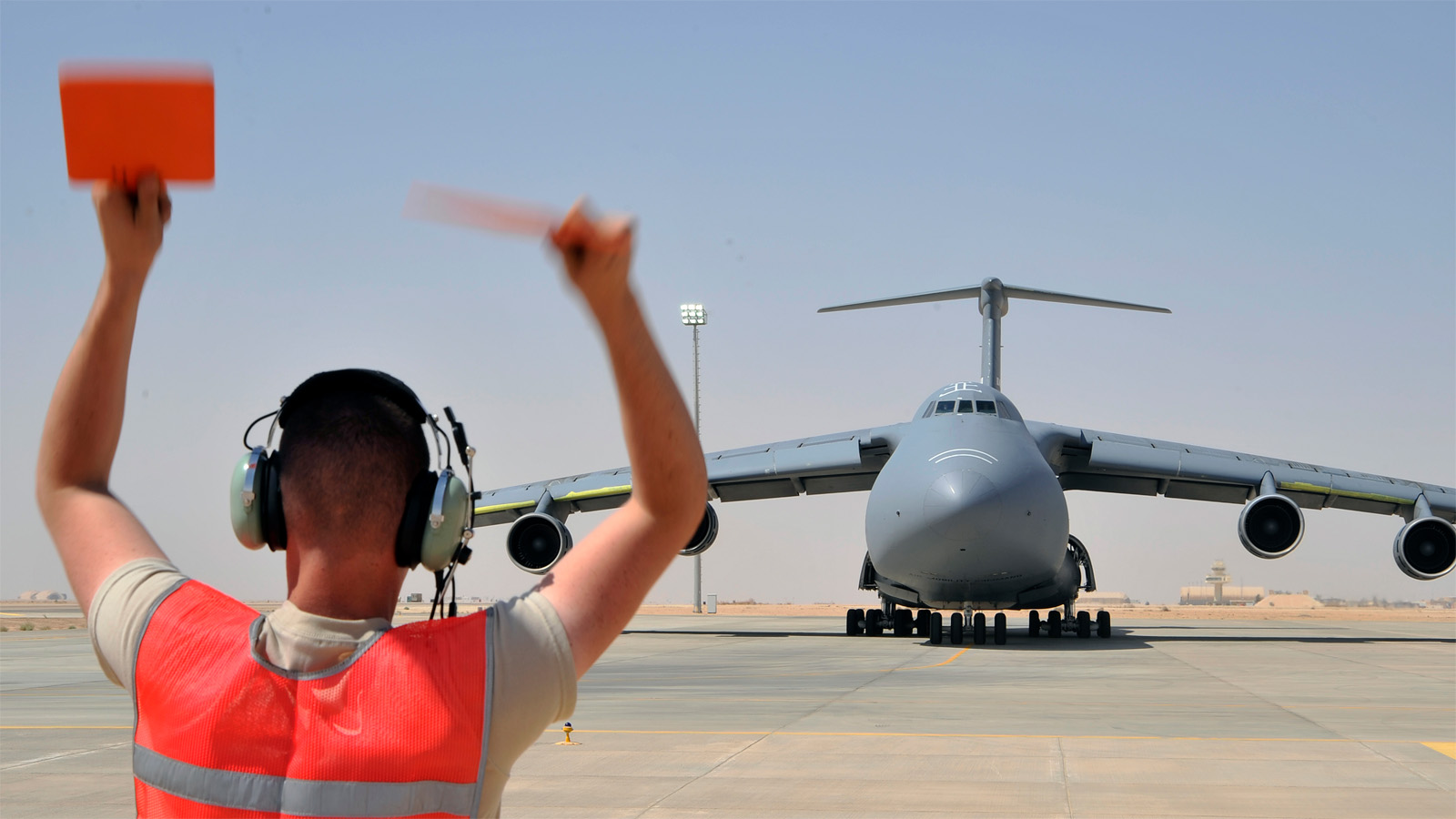
Picture: Senior Airman Perry Aston/U.S. Air Force
Bonus pic — C5-A, the original version of the C-5 Galaxy:
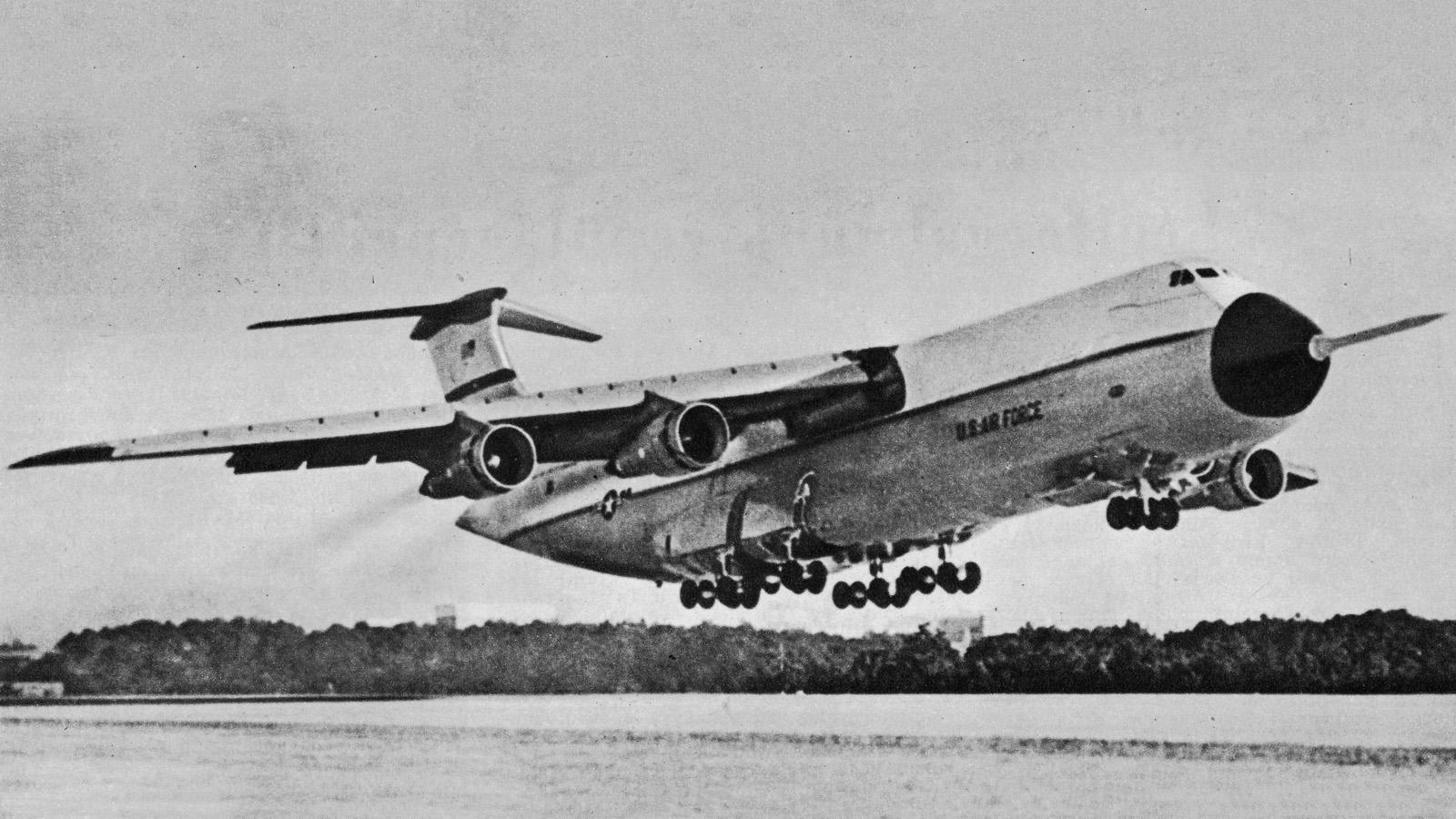
Image source: Repülés, August 1969.
Ilyushin Il-76 – Soviet Union – multi-purpose strategic airlifter, commercial freighter – 1971 – 4 x Aviadvigatel PS-90-76 turbofans – 92,500 kg – 60,000 kg – It has also been modified into an airborne refueller, waterbomber, and simulated weightlessness trainer for cosmonauts.
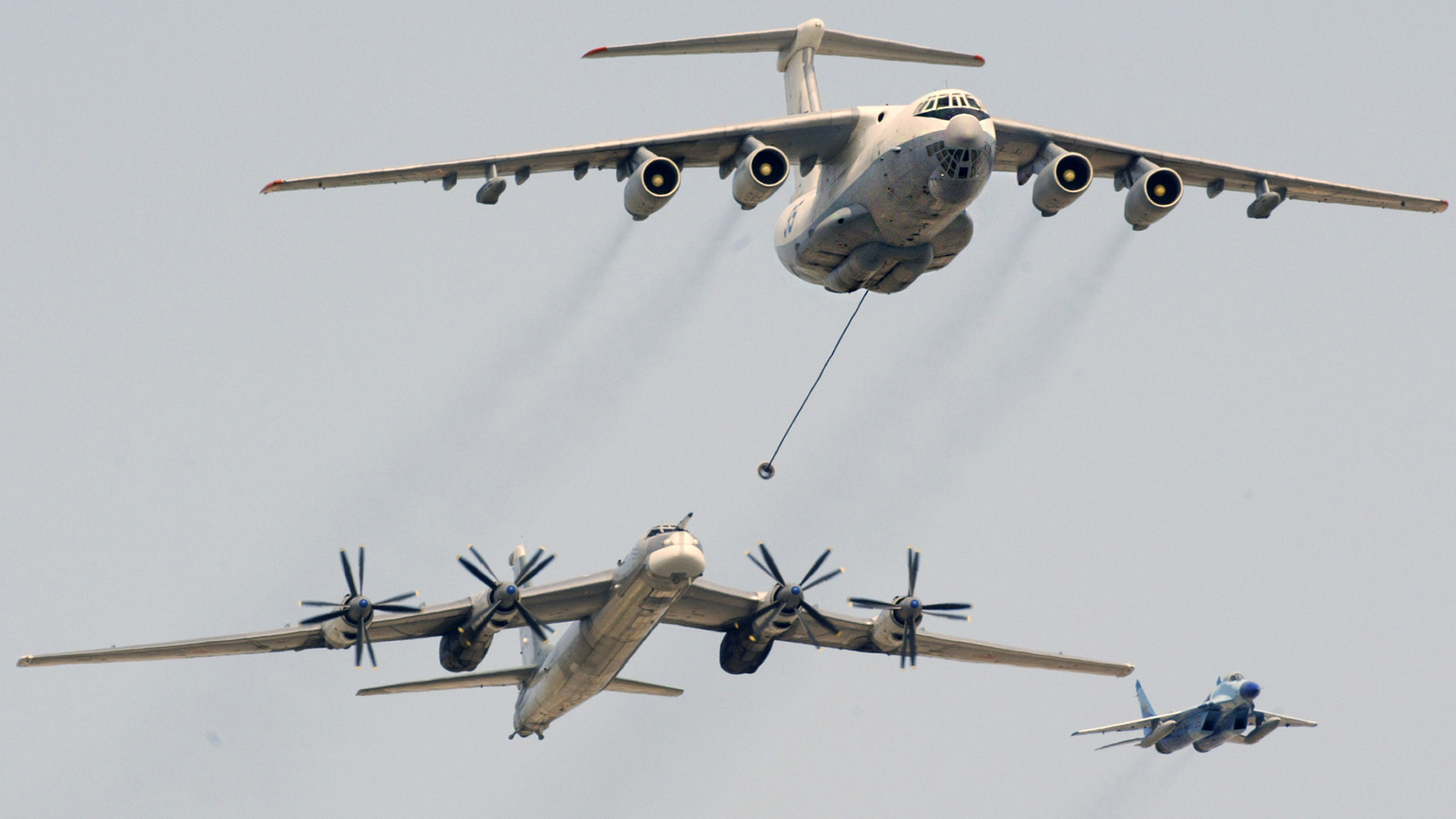
Picture: Alexander Zemlianichenko/AP
A-90 Orlyonok — Soviet Union — ekranoplan (a ground effect vehicle) — 1972 — 2 x Kuznetsov NK-8-4K turbofan, 1 x Kuznetsov NK-12MK turboprop — N/A — 28,000 kg — The A-90 uses ground effect to fly a few meters above the surface. It is a Class B Ekranoplan, it can achieve an altitude of 3,000 m.
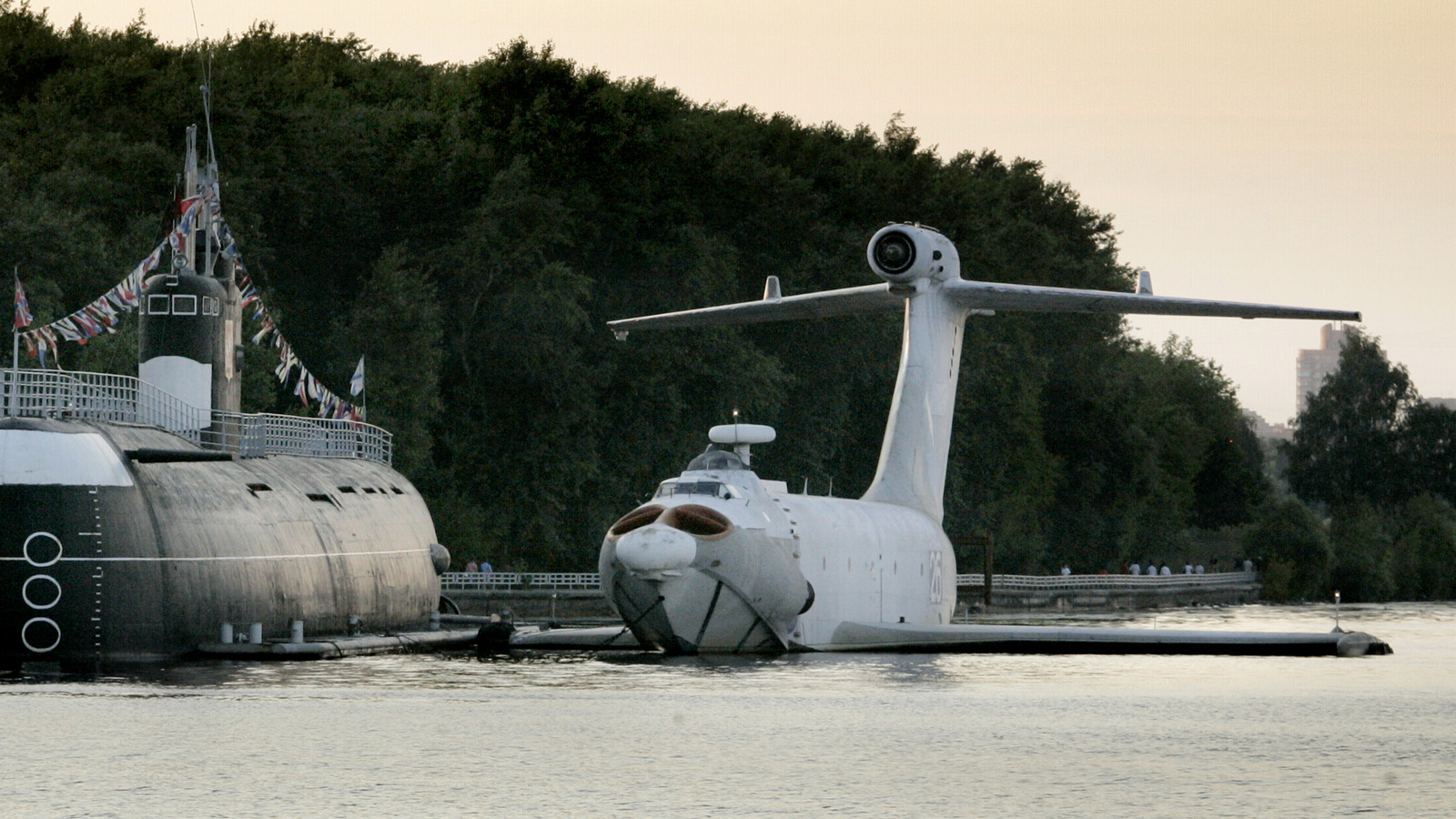
Picture: Ivan Sekretarev/AP
Mil Mi-26 — Soviet Union — heavy transport helicopter — 1977 — 2 x Lotarev D-136 turboshafts — 28,200 kg — 24,000 kg — The largest and most powerful production helicopter.
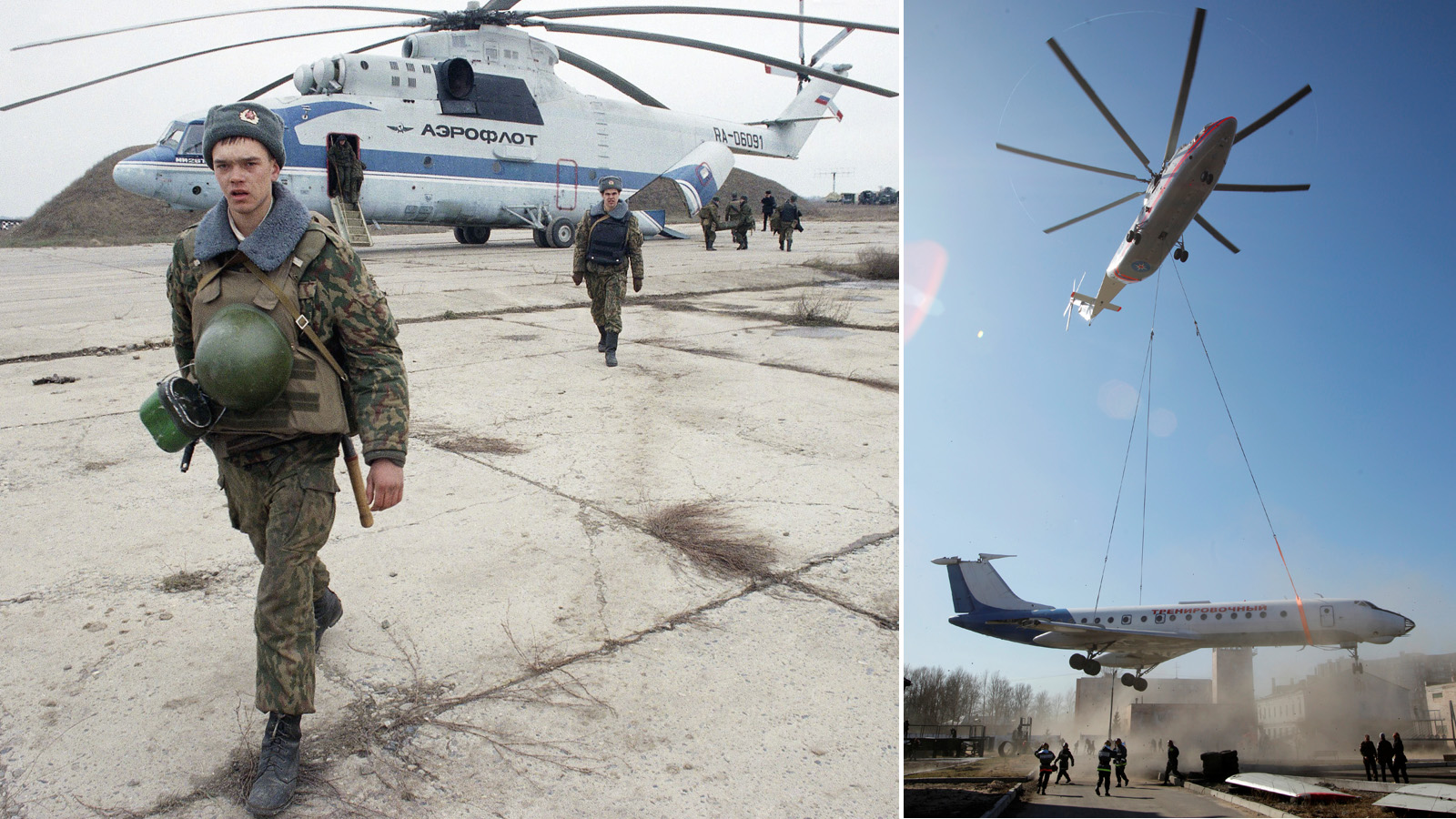
Picture: AP//Dmitry Lovetsky/AP
Boeing 747-100 Shuttle Carrier Aircraft — United States — two modified airliners NASA used to transport Space Shuttles — 1977 — 4 x P&W JT9D-7J turbofans — 144,200 kg — 68,585 kg — Piggybacking Space Shuttle orbiters.
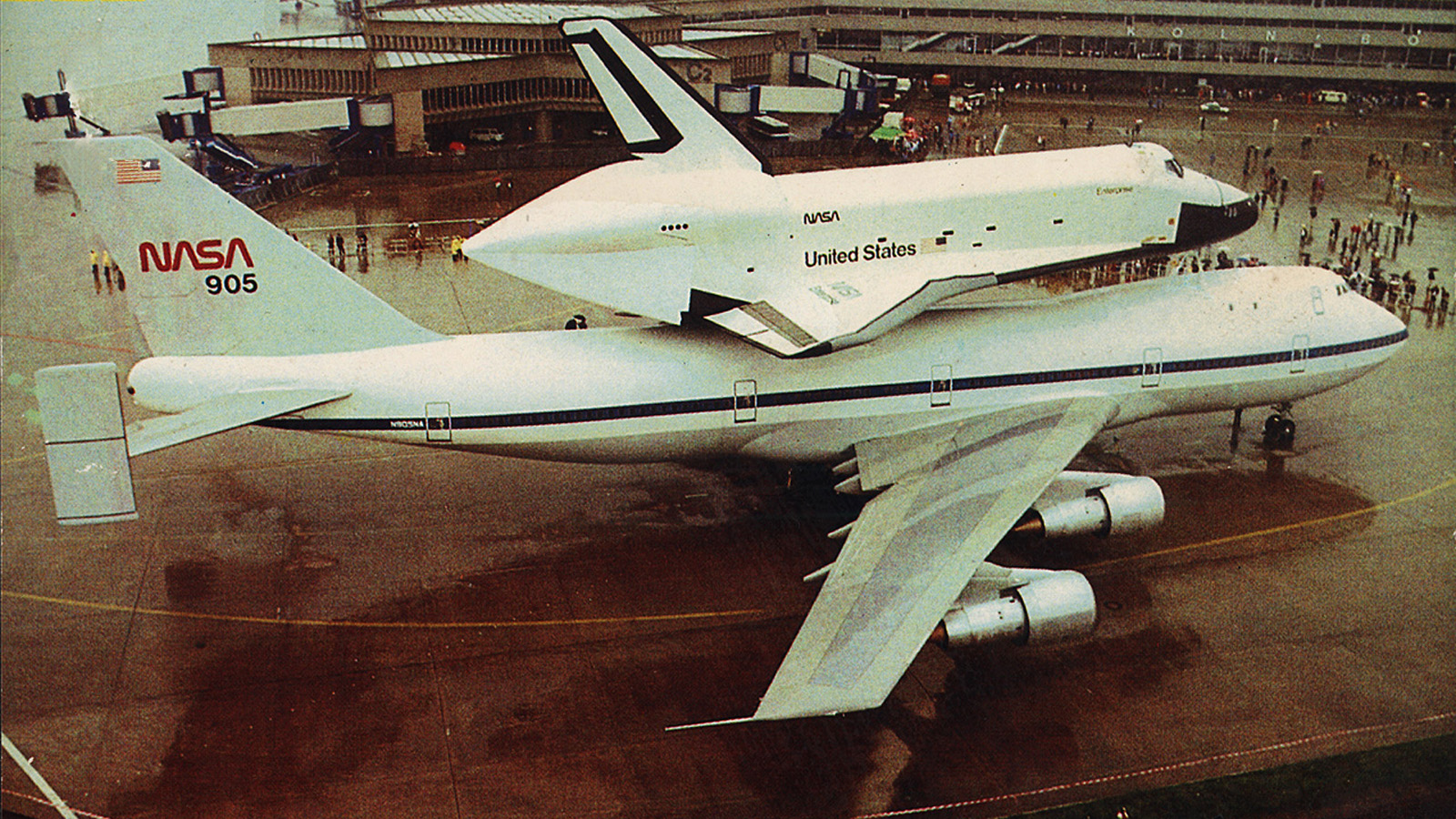
Picture: German postcard, 1983.
Myasishchev VM-T Atlant — Soviet Union — strategic airlift aeroplane — 1981 — 4 x RKBM/Koliesov VD-7MD turbojets — 75,740 kg — 50,000 kg. The VM-T was designed to carry rocket boosters and the Soviet space shuttles of the Buran program.
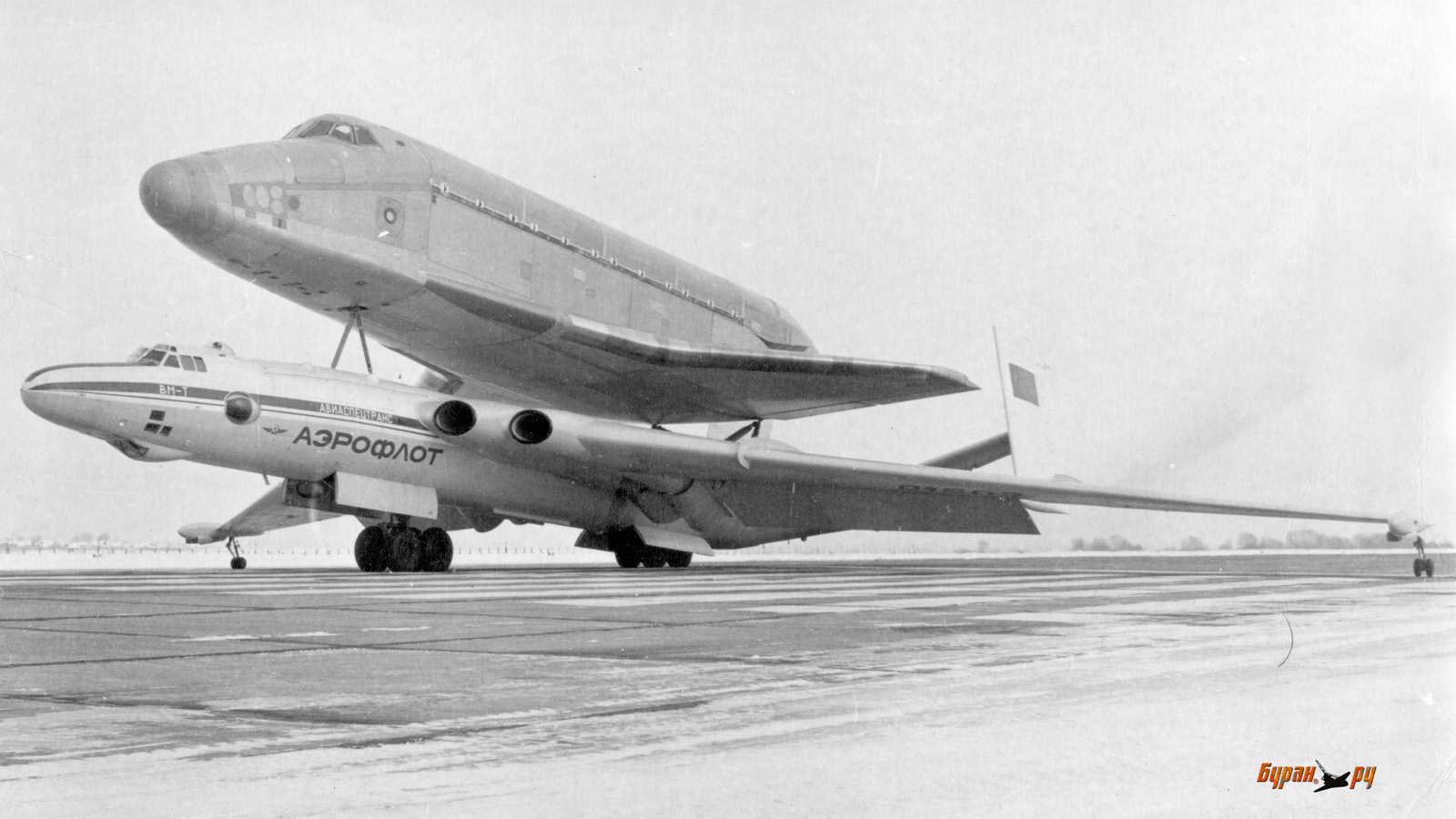
Picture: buran.ru
Antonov An-124 Ruslan — Soviet Union — strategic airlift jet aircraft — 1982 — 4 x Ivchenko Progress D-18T turbofans — 175,000 kg — 150,000 kg — The world’s largest military aircraft.
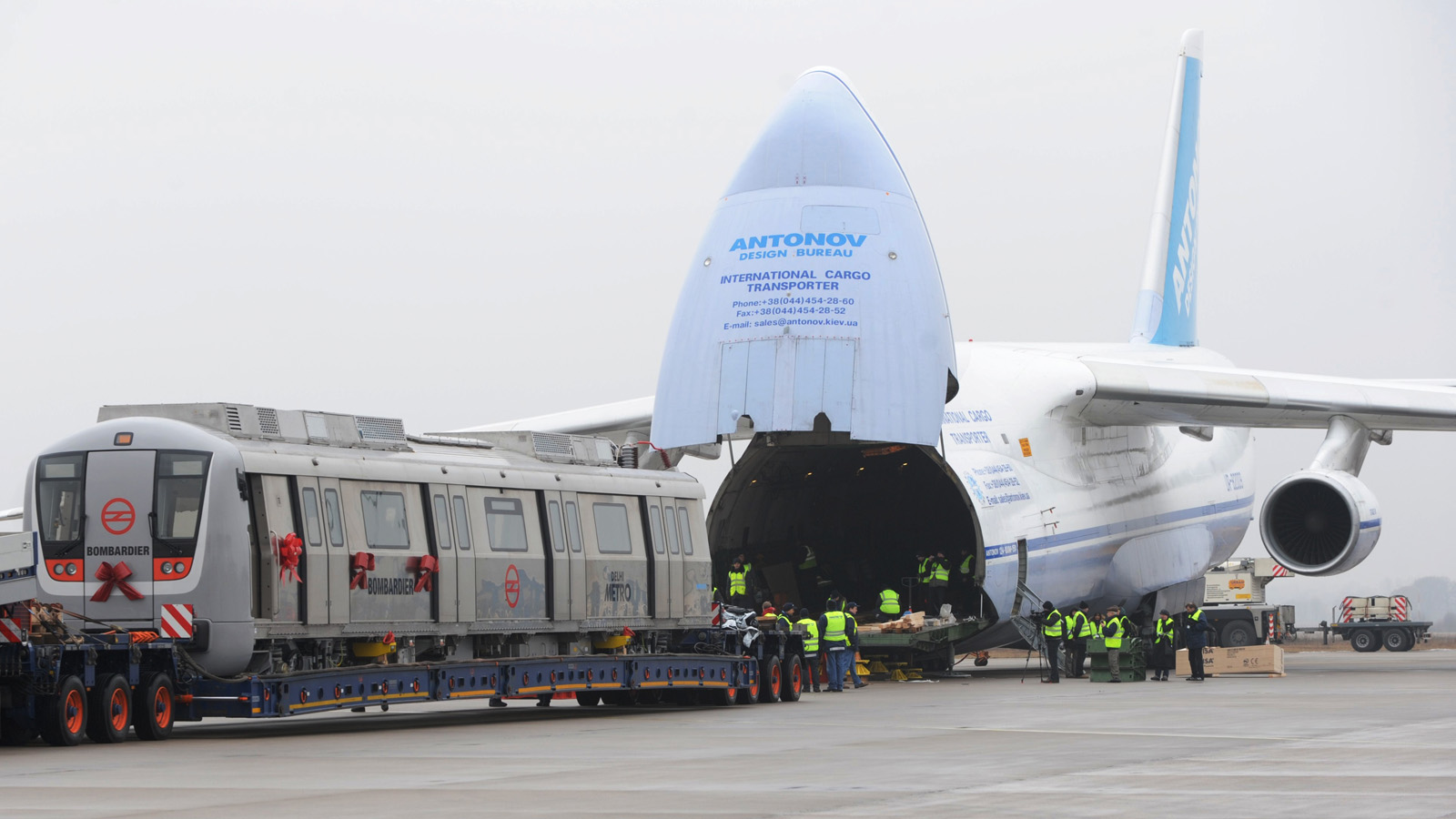
Picture: Bombardier Transportation/Getty Images
Antonov An-225 Mriya — Soviet Union — strategic airlift cargo aircraft — 1988 — 6 x ZMKB Progress D-18 turbofans — 285,000 kg — 253,820 kg — The largest and heaviest aeroplane in the world, carrier of the the Soviet space shuttle Buran.
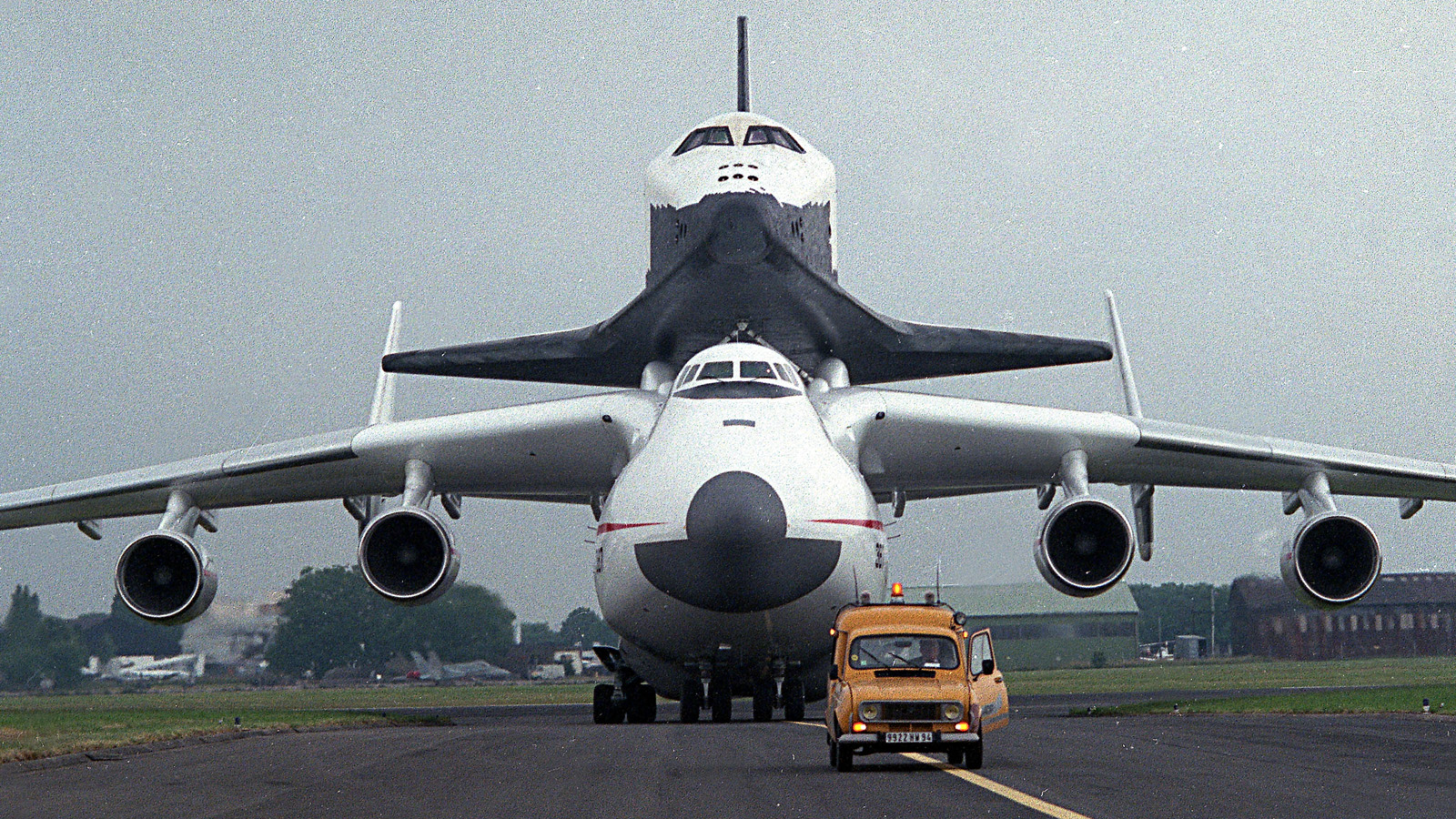
Bonus pic — because it deserves the exposure:
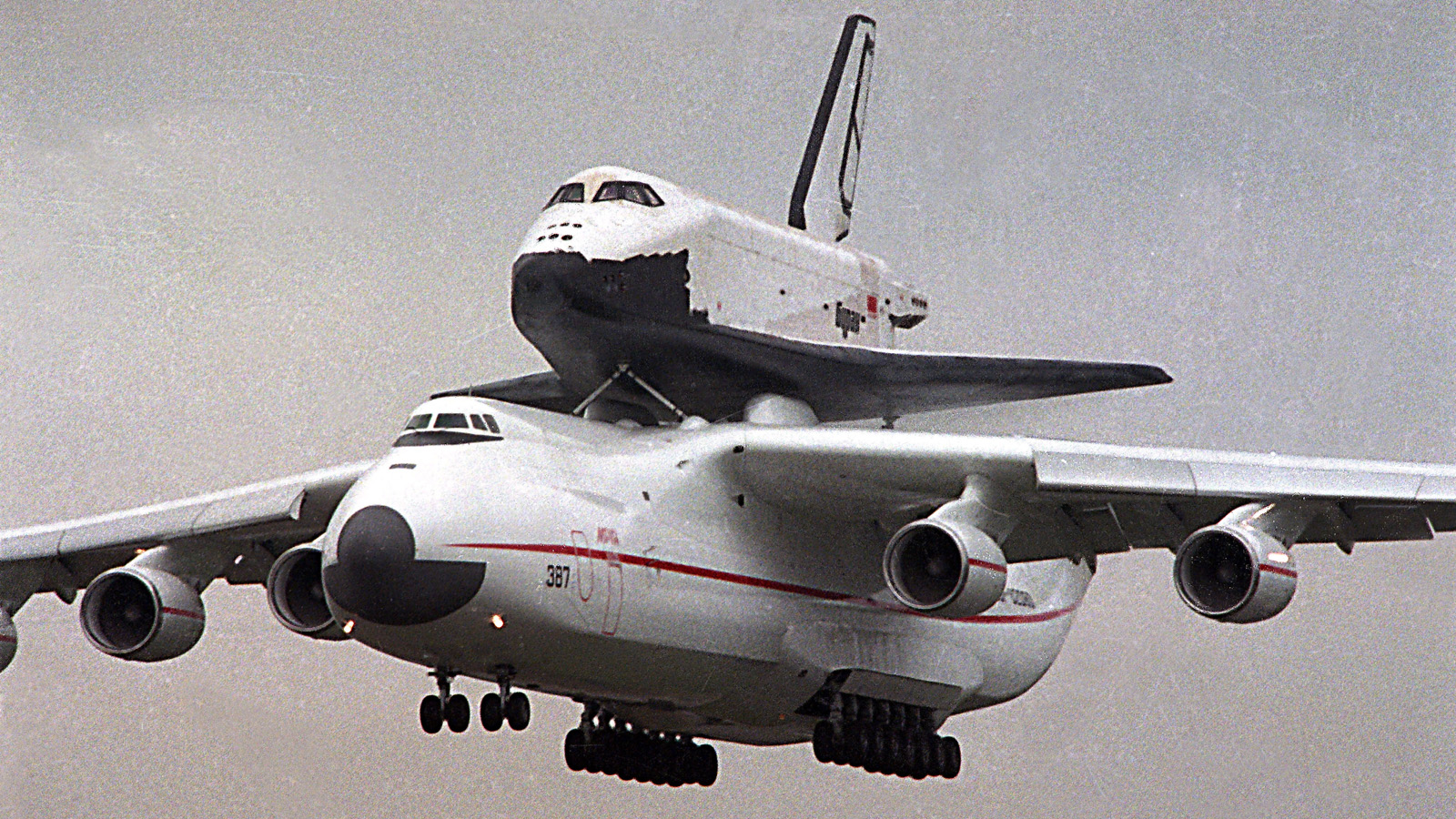
Picture: Michel Lipchitz/AP
Boeing C-17 Globemaster III — United States — strategic/tactical airlifter — 1991 — 4 x Pratt & Whitney F117-PW-100 turbofans — 128,100 kg — 77,519 kg — The C-17 is used to transport the Presidential Limousine and security detachments.
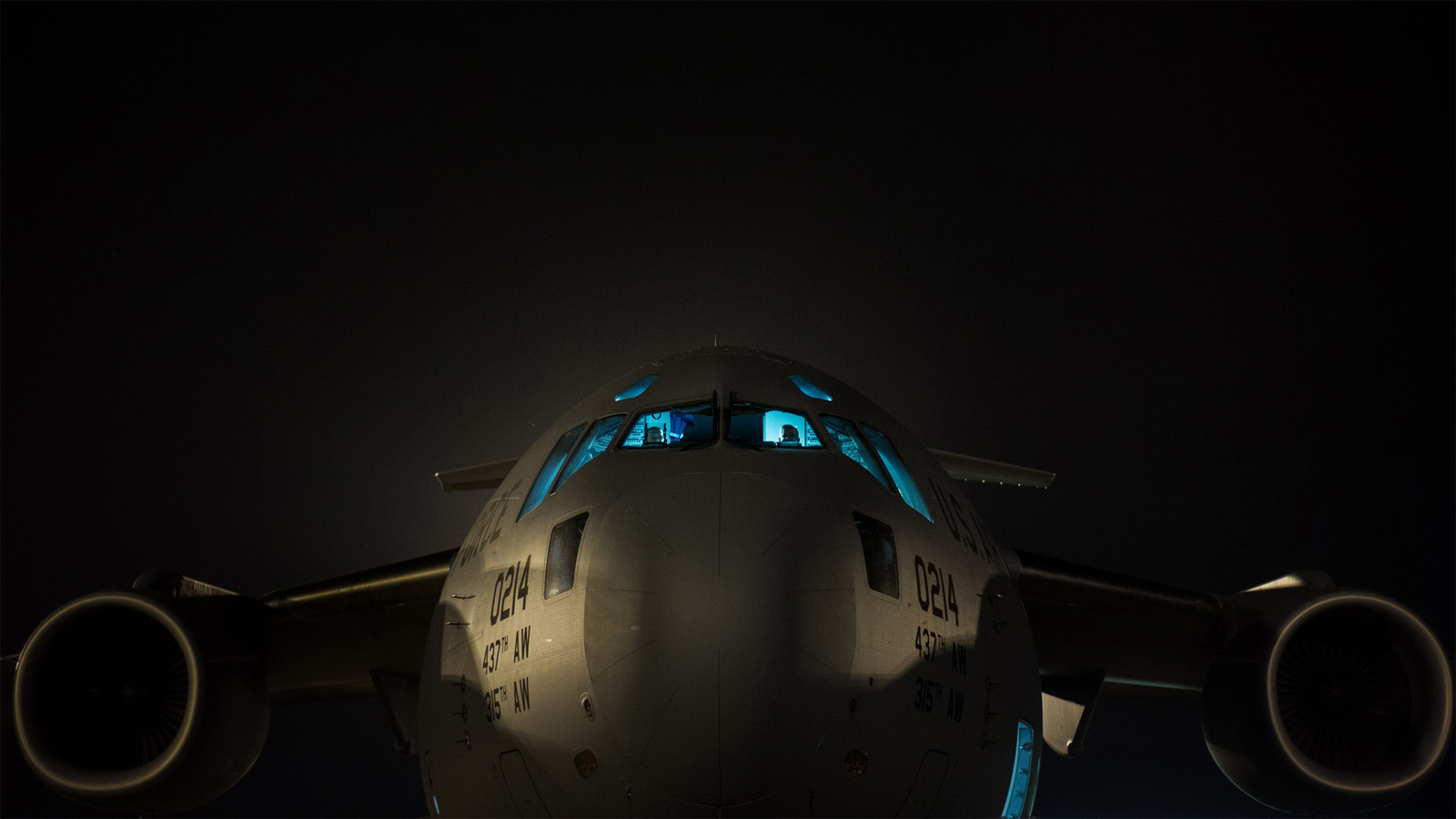
Picture: Staff Sgt. Jonathan Snyder/U.S. Air Force
Antonov An-70 — Ukraine — medium-range transport aircraft – 1994 — 4 x Progress D-27 propfans — 66,230 kg — 47,000 kg — The first large aircraft to be powered by propfan engines.
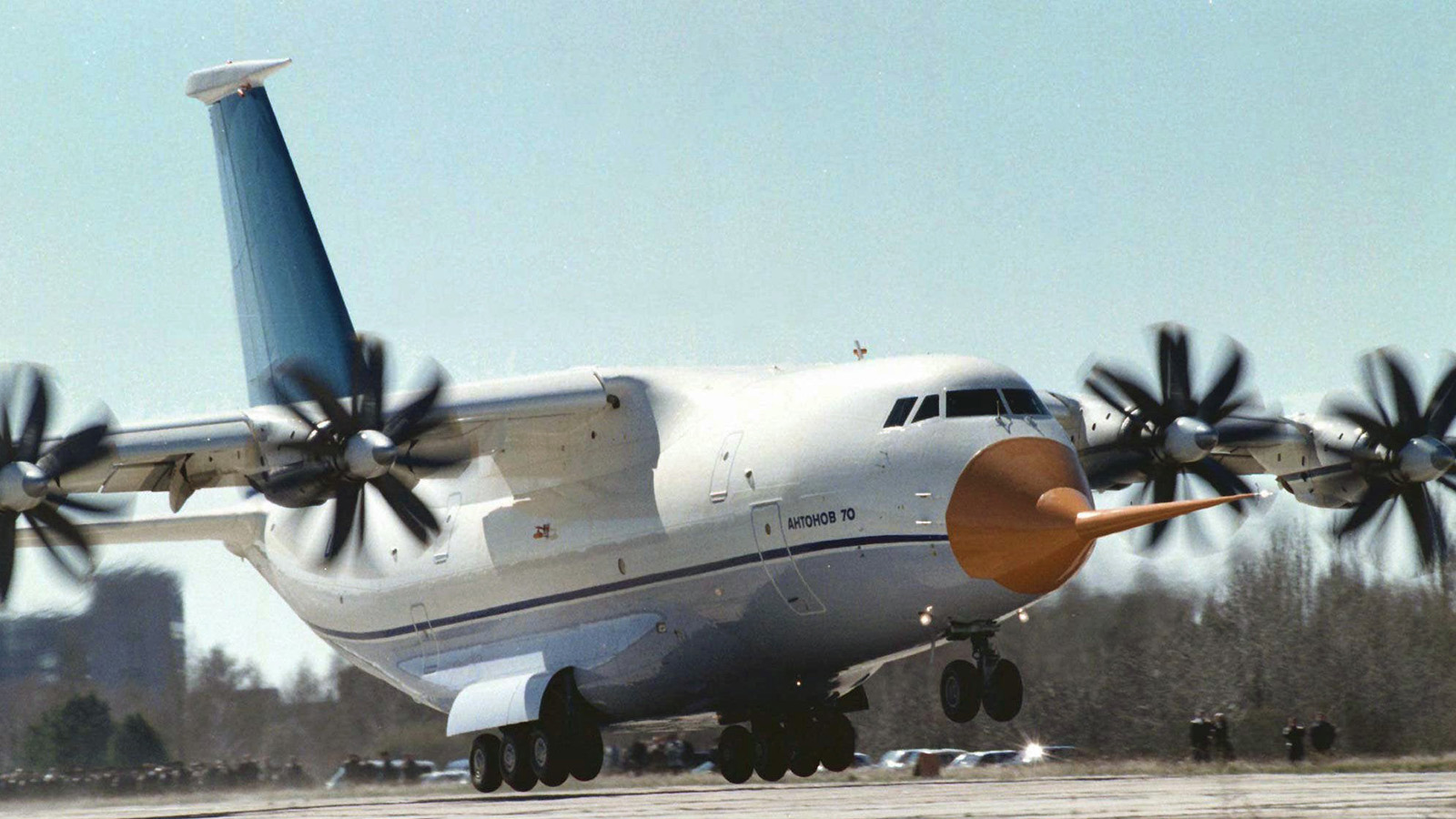
Picture: Efrem Lukatsky/AP
Airbus Beluga — France (and Germany, the United Kingdom and Spain) — wide-bodied outsize cargo freight aircraft — 1994 — 2 x GE CF6-80C2A8 high-bypass turbofans — 86,000 kg — 47,000 kg — It is basically an Airbus A300-600 airliner modified to carry aircraft parts and oversized cargo, and well, it really looks like a Beluga.
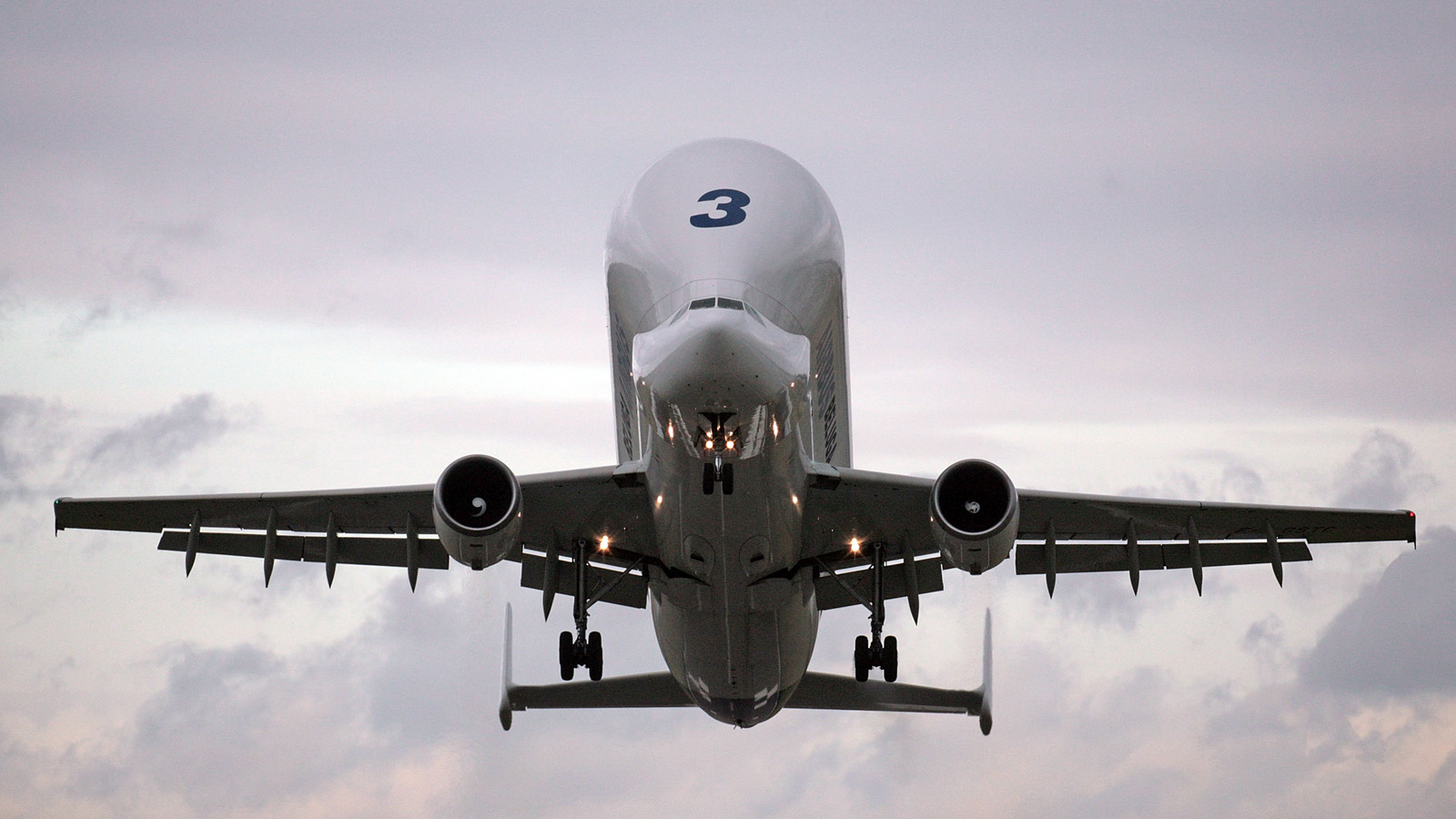
Picture: Christopher Furlong/Getty Images
Boeing 747 Large Cargo Freighter (LCF) or Dreamlifter — United States — wide-body cargo aircraft — 2006 — 4 x Pratt & Whitney 4062747 high-bypass turbofans — 180,530 kg — N/A — Used exclusively for transporting 787 aircraft parts to Boeing’s assembly plants from suppliers around the world. Able to land and takeoff from Col. James Jabara Airport, Wichita, Kansas.
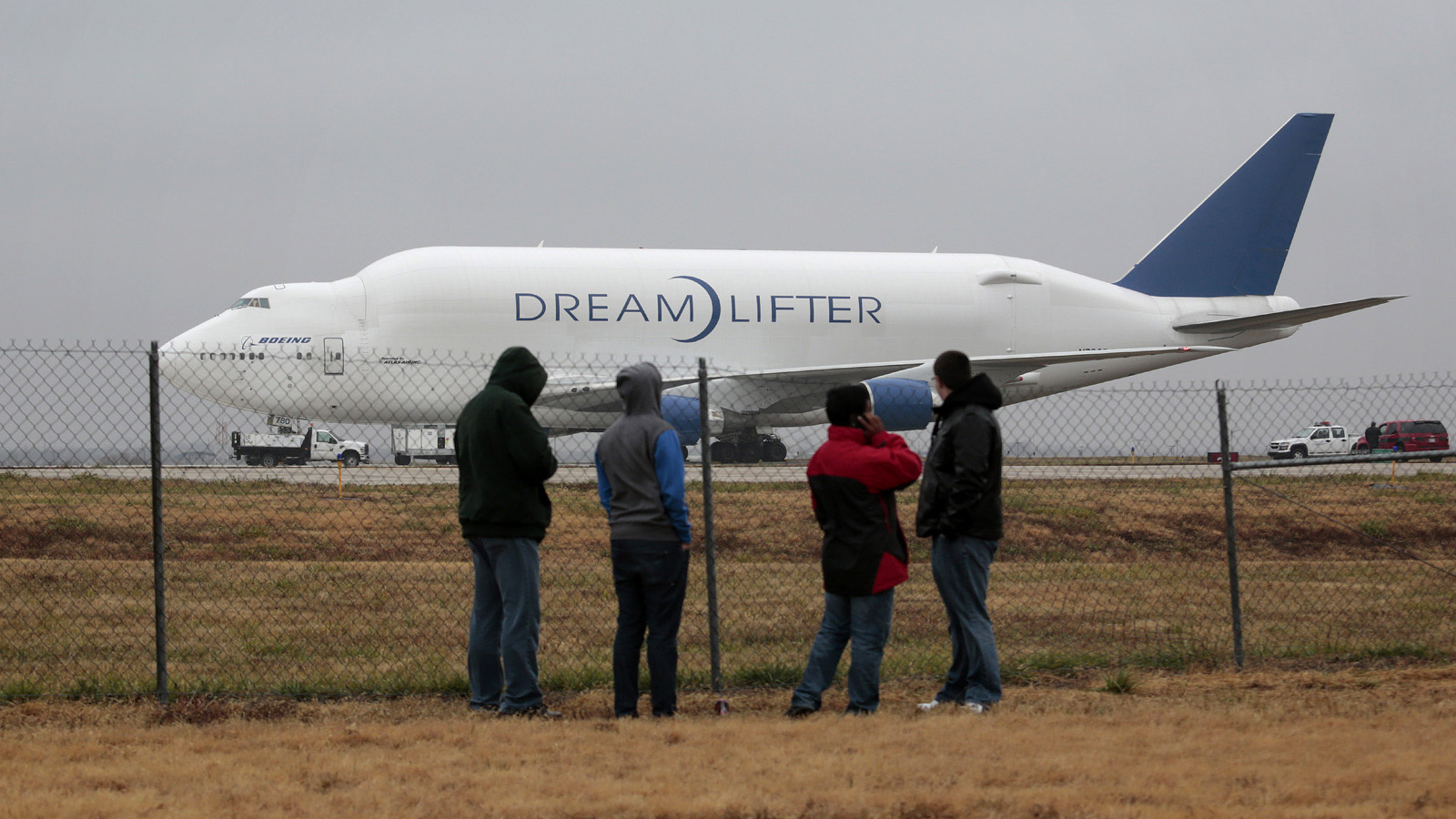
Picture: Brett Deering/Getty Images
Boeing 747-8F — United States — wide-body freighter aircraft — 2010 — 4 x GEnx-2B67 high-bypass turbofans — 195,800 kg — 140,000 kg — The second largest cargo jet after the Mrya.
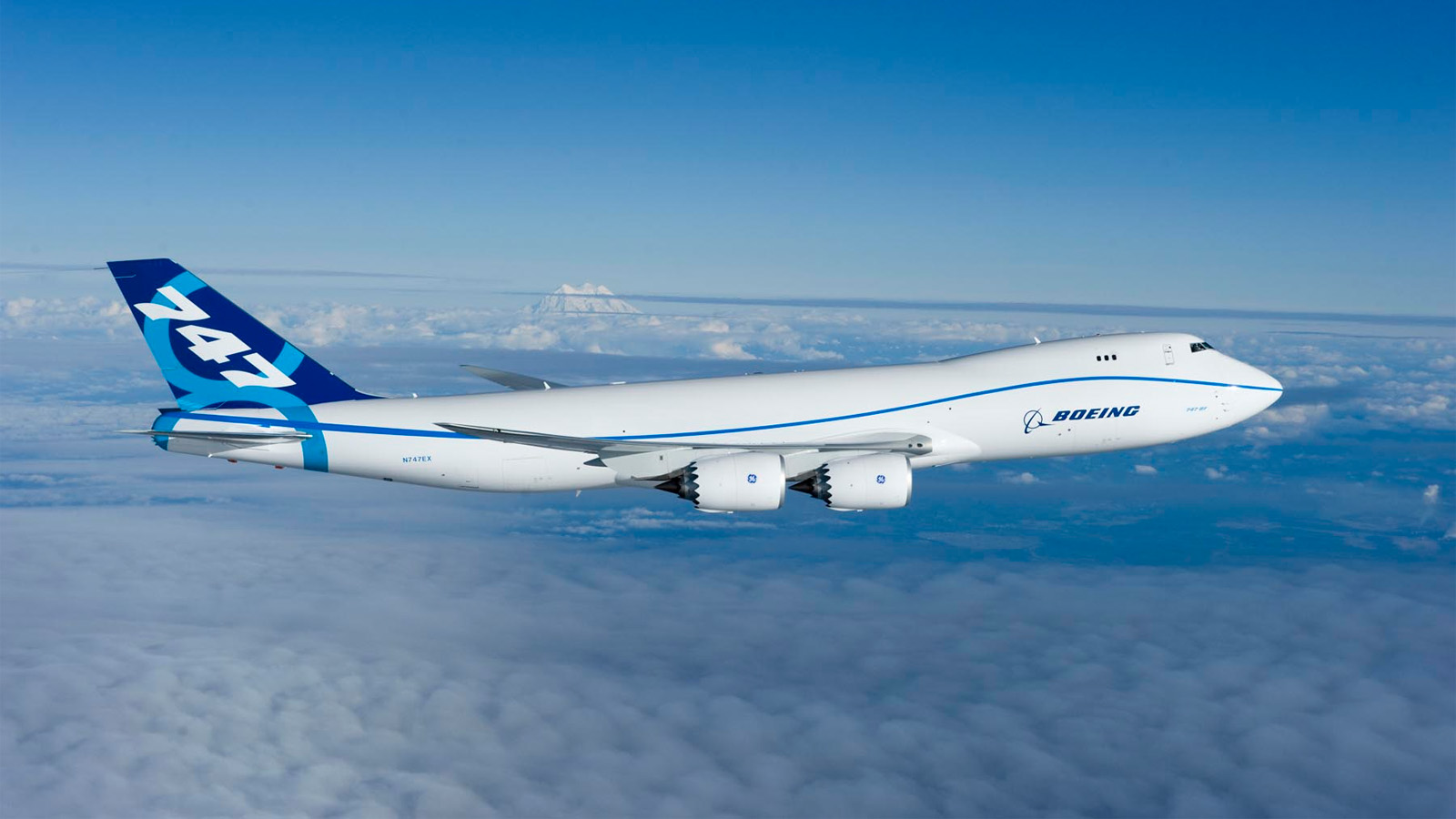
Picture: Boeing Dreamscape/Wikimedia Commons
Top photo: The National Aeronautics and Space Administration’s Super Guppy. The awkwardly shaped aircraft is specifically designed to carry oversized payloads and has been in service since August 1965. — Tech. Sgt. Christine Jones/U.S. Air Force
